
2022
REPORT Including SASB & TCFD Aligned Reporting
SUSTAINABILITY
ABOUT THIS REPORT
We are guided by our commitment to sustainability and our robust environmental, social and governance (ESG) policies and practices. Our Sustainability Report provides transparency into the social, environmental and economic impacts of NorthWestern Energy. We created this voluntary report to offer insights into how we view sustainability.
ABOUT NORTHWESTERN ENERGY

NorthWestern Corporation, doing business as North Western Energy, provides electricity and/or natural gas to approximately 753,600 customers in Montana, South Dakota, Nebraska and Yellowstone National Park. We are working to deliver safe, reliable and innovative energy solutions that create value for customers, communities, employees and investors. This includes bridging our history as a regulated utility safely providing low-cost and reliable service with our future as a globally-aware company offering a broader array of services performed by highly-adaptable and skilled employees. We seek to deliver value to our customers by providing high reliability and customer service, and an environmentally sustainable genera tion mix at an affordable price. The energy landscape is changing and we are committed to meeting the changing demands of our customers through con tinued investment to enhance reliability, security and safety, grid modernization, and integration of even more renewables and energy storage, while meeting our growing demand for capacity. We are focused on delivering long-term shareholder value through:
• Infrastructure investment focused on a stronger and smarter grid to improve the customer expe rience, while enhancing grid reliability and safety. This includes automation in customer meters, distribution and substations that enables the use of proven new technologies.
• Investing in and integrating supply resources that balance reliability, cost, capacity, and sus tainability considerations with more predictable long-term commodity prices.
• Continually improving our operating efficiency. Financial discipline is essential to earning our authorized return on invested capital and main taining a strong balance sheet, stable cash flows, and quality credit ratings to continue to attract cost-effective capital for future investment.
We expect to pursue these investment opportunities and manage our business in a manner that allows us to be flexible in adjusting to changing economic conditions by adjusting the timing and scale of the projects. We are committed to providing customers with reliable and affordable electric and natural gas service while also being good stewards of the envi ronment.
FORWARD LOOKING STATEMENTS
Statements in this report not based on historical facts are considered “forward-looking” and, accordingly, involve risks and un certainties that could cause actual results to differ materially from those discussed. Although such forward-looking statements have been made in good faith and are based on reasonable assumptions, there is no assurance that the expected results will be achieved. These statements include (without limitation) statements as to future expectations, beliefs, plans, strategies, ob jectives, events, and conditions. In connection with the “safe harbor” provisions of the Private Securities Litigation Reform Act of 1995, we are providing this cautionary statement to identify important factors that could cause actual results to differ ma terially from those anticipated. The following factors, in addition to those discussed within Risk Factors in our Annual Report on Form 10-K for the year ended December 31, 2021, and elsewhere in this report and in our other filings with the Securities and Exchange Commission, could cause actual results to differ materially from management expectations suggested in such forward-looking statements:
• federal, state or local administrative, regulatory, judicial, or legislative proceedings or actions, and any changes in laws, regulations, interpretations, policies and ratemaking determinations;
• the effects on demand for our services resulting from business and economic conditions or from technological advanc es, including advances in customer energy efficiency, energy storage, and private generation sources, which generate electricity at the site of consumption and are becoming more cost-competitive;
• our ability to align overall spending, both operating and capital, with frameworks established by our regulators and to recover these costs in a timely manner to earn the allowed return on equity;
• the cost and availability of fuel used to produce electricity; the cost and availability of purchased power, zero emission credits, renewable energy credits, and natural gas for distribution; and the level and volatility of future market prices for such commodities and credits, including our ability to recover the costs for such commodities and credits and our cus tomers’ tolerance for any related price increases;
• disruptions of the capital markets, actions of credit rating agencies or deterioration in our credit metrics, including the cost or availability of capital, including short-term credit and liquidity and our ability to finance a portfolio transition;
• the impact of weather conditions and other natural phenomena on us and our customers, including the impact of system outages;
• the construction, installation, performance, and / or the effects of breakdowns or failures of equipment in the operation of our electric and natural gas transmission and distribution systems and storage facilities, such as leaks, explosions, and mechanical problems, and compliance with safety regulations which could result in unanticipated liabilities or unplanned outages;
• the impact of current environmental laws and new, more stringent, or changing requirements, including those related to carbon dioxide that could limit or terminate the operation of certain of our generation assets, increase our operating costs or investment requirements, result in an impairment of our assets, cause us to sell our assets, reduce our custom ers’ demand for electricity or natural gas, or otherwise have a negative financial effect;
• the impact of negative opinions of us or our utility services that our customers, legislators, or regulators may have or de velop, which could result from a variety of factors, including failures in system reliability, failure to implement our invest ment plans or to protect sensitive customer information, increases in rates, or negative media coverage;
• the effects of strategic initiatives, including mergers, acquisitions, and divestitures; and
• acts of sabotage, war, terrorism, or other intentionally disruptive acts.
New factors emerge from time to time, and it is not possible for management to predict all of such factors, nor can it assess the impact of each such factor on the business or the extent to which any factor, or combination of factors, may cause actual results to differ materially from those contained or implied in any forward- looking statement. Given these uncertainties, un due reliance should not be placed on these forward-looking statements. Except to the extent required by the federal securi ties laws, we undertake no obligation to update or revise publicly any forward-looking statements to reflect new information or future events.
2022 Sustainability Report | 3

4 | 2022 Sustainability Report
this report
About
Energy
Forward looking statements ........................................................................................................................................ 3 Intro
Message
CEO and COO/President
Company Overview / History ........................................................................................................................................ 7 Vision, mission, values:.................................................................................................................................................... 7 Accomplishments in ESG
Environmental Stewardship 9 Our Net Zero Vision .......................................................................................................................................................... 9 Our Balanced Energy Mix ............................................................................................................................................ 10 Energy Efficiency 11 Our Efficiency Plus (E+) Programs 11 Automated Metering Infrastructure (AMI) 11 Grid and Natural Gas Infrastructure ........................................................................................................................ 12 Electric Vehicles ................................................................................................................................................................ 12 Our Fleet 12 EV Infrastructure Investments 12 Our Natural Gas Operations 13 Advanced Leak Detection 13 Development of Alternative Fuels .............................................................................................................................. 14 Wildlife Protection and Habitat Conservation .................................................................................................... 15 Environmental Permitting 15 Social ........................................................................................................................................................................................ 16 Our Commitment to Our Customers ....................................................................................................................... 17 Affordability 18 Reliability 19 Our commitment to public safety 20 Lower Customer Costs through Energy Efficiency 20 Green Energy Options for Customers .....................................................................................................................20 Cyber security and scam prevention .......................................................................................................................20
CONTENTS About
2
NorthWestern
2
6
from
6
8
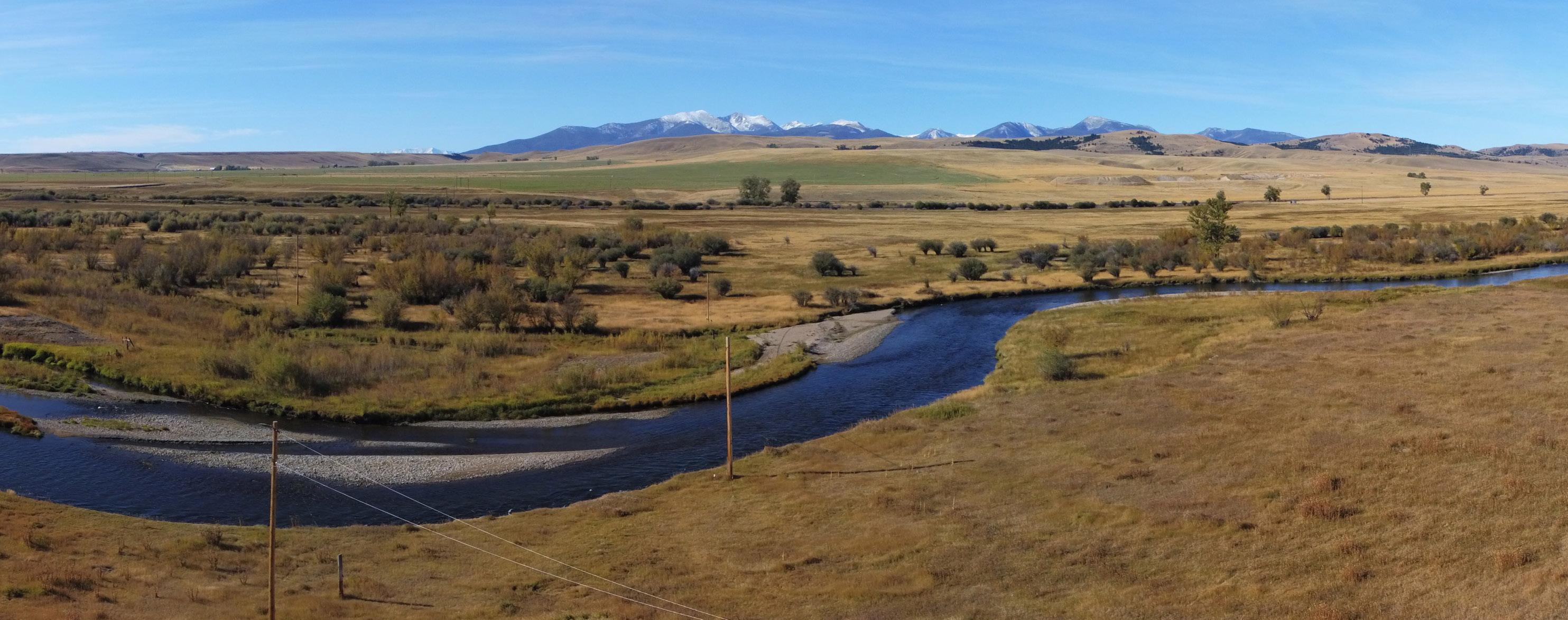
2022 Sustainability Report | 5 Our commitment to the communities we serve ................................................................................................. 21 Our economic impact .................................................................................................................................................... 21
Giving and Volunteering 21
to Clean Energy for Communities
Wildfire Mitigation Plan
Value
the accomplishments of our employees .........................................................................................
Safety
Profile
Pay and Benefits
assistance program offers free counseling
incentives with our wellbeing program..........................................................................................................
Development & Training .......................................................................................................................... 29 Diversity and Inclusion 33
Attraction 34 Career outreach 34 Hybrid work location 34 Performance Reviews / Feedback ........................................................................................................................... 34 Governance 35 Corporate Governance Award Winner 35 Best Investor Relations Program ............................................................................................................................. 35 ESG Committee ............................................................................................................................................................... 35 Enterprise Risk Management 35 Our Board of Directors 36 What We Do 36 What We Don’t Do 36 Board Diversity ................................................................................................................................................................ 37 Executive Pay 38 Financial Results 38 Supplier Code of Conduct and new supplier diversity program 38 NorthWestern Energy Sustainability Accounting Standards Board (SASB) Framework ............. 39 NorthWestern Energy Task Force on Climate-related Financial Disclosures (TCFD) Index 52
Charitable
Transition
23 Enhanced
23 Employee
24 Celebrating
25 Employee
26 Workforce
27 Employee
28 Our
28 Earn
28 Workforce
Workforce
INTRO


MESSAGE FROM CEO AND COO/PRESIDENT
Over the past 100 years, NorthWestern Energy has maintained our commitment to provide customers with reliable and afford able electric and natural gas service while also being good stewards of the environment.
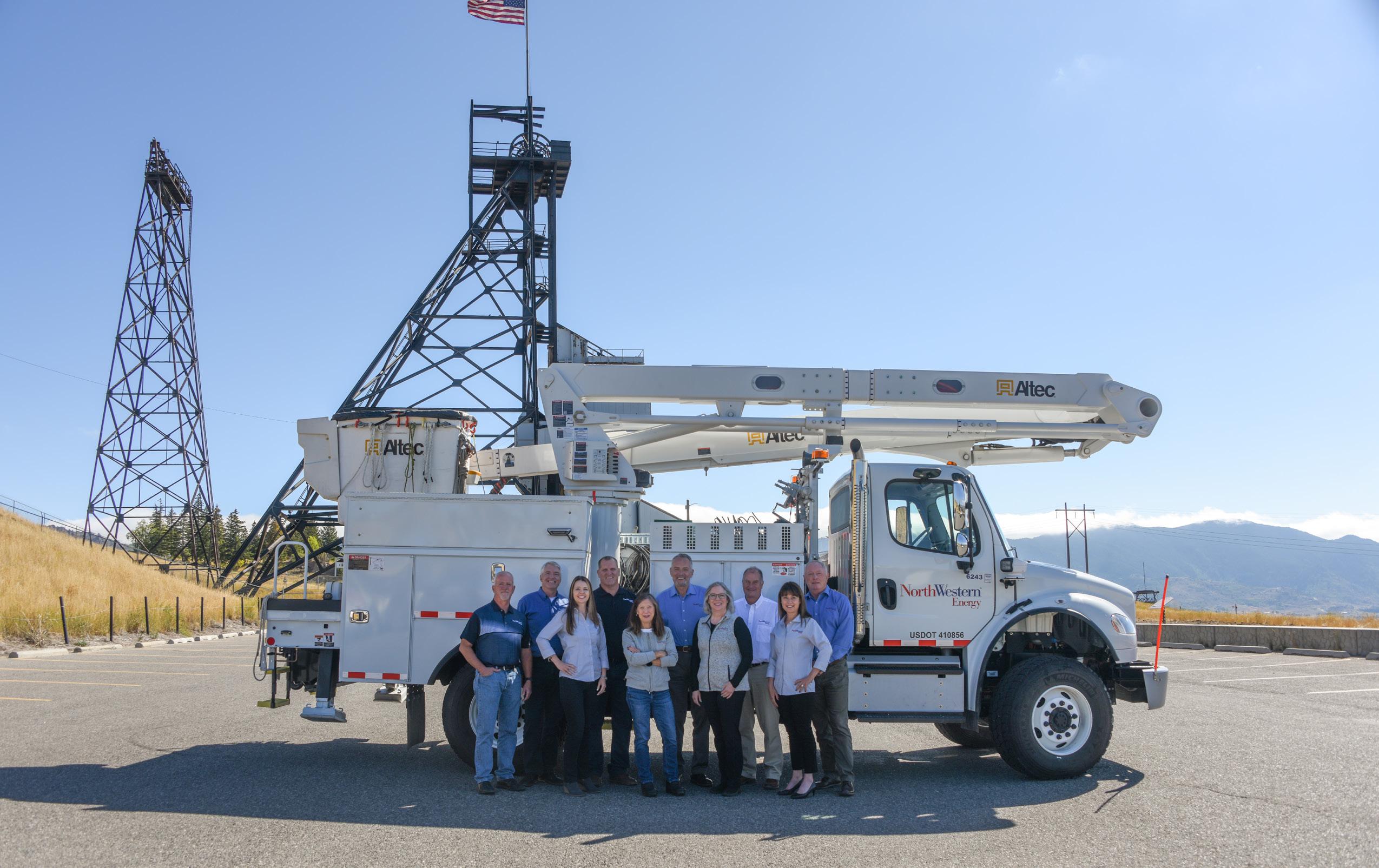
We have long been committed to excellent corporate governance, deep community engagement and robust environmental programs.
We have an obligation to ensure sustainable long-term strategies and practices to meet today’s needs while preparing to meet tomorrow’s. In turn, we recognize sustainability is built upon operational excellence, financial soundness, constructive policy and, perhaps above all, cultural integrity.
Our business practices reflect a respect for, and a commitment to, ESG policies and practices.
We know electricity and natural gas are critical resources that impact all areas of life. Our customers count on us every day for the energy they need, and we take very seriously the responsibility to supply that energy today and far into the future.
In early 2021, we established an ESG Committee that meets monthly. This committee includes a broad representation of subject matter experts from across the company and is led by NorthWestern’s President and Chief Operating Officer. A main focus of the committee is to provide accurate and reliable disclosure of financial and non-financial performance indicators that demonstrate the company’s approach toward responsible investment, sustainability and ESG considerations.
By focusing on our mission of investing in the critical infrastructure and essential service on which our region depends, we have produced sustainable results for our investors and customers. As we move into the future, we remain committed to keeping sustainability in the forefront as we work to provide the performance and value that our customers, shareholders, employees and regulators have come to expect from NorthWestern Energy.
Rowe, Chief Executive Officer
Bird, President and Chief Operations Officer
6 | 2022 Sustainability Report
Robert
Brian
COMPANY OVERVIEW / HISTORY
Northwestern Public Service (NPS) was founded in 1923 by bringing together four utility properties (two in Nebraska and two in South Dakota). NPS continued to grow over the years, purchasing dozens of local and regional utilities to provide electric and natural gas to South Dakota and Nebraska customers and ultimately re-brand ing as NorthWestern Corporation (doing business as NorthWestern Energy) in 1998.
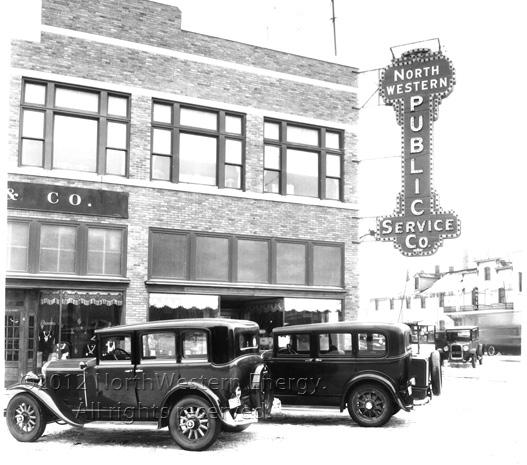


Montana Power Company (MPC) was founded in 1912 in Butte, Montana, to provide power for the Anaconda Copper Mining operations and to the larger cities in Montana. MPC grew to supply power across 70% of Montana.
In 2002, NorthWestern Corporation purchased MPC’s distribution and transmission sys tem, forming NorthWestern Energy.
Since the combination of the two utilities, NorthWestern has added more than 580 megawatts of owned carbon-free generation, including a 2014 acquisition of 11 hydro electric facilities.
Today, NorthWestern is investing back into its critical infrastructure at roughly five times the rate we were in 2002 to serve our 753,600 customers covering Montana, South Dakota, Nebraska and Yellowstone National Park.
Vision, mission, values:
Our Vision:
Enriching lives through a safe, sustainable energy future.
Our SERVICE Values:
Our Mission:
Working together to deliver safe, reliable and innovative energy solutions that create value for customers, communities, employees and investors.
Safety:
We strive to do our jobs safely and securely every day, without fail and without exception. We ensure the safety and security of our customers, the environment and the public through proper maintenance of our equipment and strict adherence to our belief in maintaining a safe and secure working environment.
Excellence: We aim to achieve the highest levels of satisfaction, reliability and performance in everything we do. We’re always striving for improvement and questioning the status quo.
Respect: We value diversity, equality and inclusion. Every employee is treated with dignity and fairness.
Value:
We are committed to providing shareholders with returns that are among the best in our industry. Value to our customers comes through the products and services we deliver at prices that illustrate our focus on quality, efficiency and productivity.
Integrity:
We adhere to ethical business practices and are honest and transparent in our actions.
Community: Our success is tied to the success of each and every one of our communities. We aim to be a good corporate citizen through the contribution of our time, talent and resources to help our communities fulfill their vision of success.
Environment:
We are committed to providing all customers with utility services that meet their current and future needs, while protecting and enhancing the quality of the environment. We will utilize our limited natural resources wisely and act responsibly to limit impacts on our air, water and land resources.
2022 Sustainability Report | 7
OUR COMMITMENT TO SUSTAINABILITY
At NorthWestern Energy, we are guided by our commitment to sustainability and our robust environmental, social and governance (ESG) policies and practices. Sustainability means meeting today’s needs while planning for tomorrow’s as well. We have focused our ESG efforts on providing safe, reliable and innovative energy solutions that sustain and create value for our customers, communities, employees and investors.
Protecting the Environment
NorthWestern Energy is proud to serve some of the most beautiful areas of the country. We know everything we do affects the environment. Through our environmental programs, we find ways to protect and enhance rivers, streams and habitats.
We are committed to reaching Net Zero Emissions by 2050 This will allow us to do our part to help achieve the goal of limiting the global temperature increase to less than 2° Celsius.
We adopted Sustainable Procurement Guidelines to help guide our purchasing of office supplies, technology equipment, furniture and more.
We are in the process of replacing 30% of our light-duty vehicles, 20% of our new medium- and heavyduty vehicles, 30% of new bucket trucks and 100% of new forklifts with electric alternatives by 2030.
Social Sustainability
We know diversity can bring new ideas and perspectives to any organization. As an industry, electric and natural gas companies have made great strides in increasing the diversity of our management and workforce over the past decades. We identify and manage business impacts and activities, both positive and negative, on our employees, customers and communities we serve.
We support the communities we serve through charitable giving, sponsorships, economic development opportunities, scholarships and professional association dues. In 2021, we gave $1.8 million to our communities.
We created a Diversity, Equity and Inclusion Plan to help build on our already inclusive culture.
We were certified a Great Place to Work by the 2022 Great Place to Work Trust Index Survey.
We encourage all employees to be active members of their communities. In 2021, we donated to 103 nonprofits through our Employee Volunteer Program and Team Grant Program.
Getting Results the Right Way
We are committed to conducting business with integrity, while ensuring transparency and accountability, and meeting our responsibilities to all our stakeholders. We adhere to a strict code of ethics regarding corporate governance.
The ratio of CEO to average employee pay is 28:1, compared to our peer group average of 42:1 and utility average of 79:1.
50/50 Women on Boards recognizes us as a “3+” company, as three of our board seats are held by women, making up 37% of our Board of Directors.
Our Supplier Diversity program has helped us diversify service and material suppliers.
All the information above is based on 2021 year-end numbers
8 | 2022 Sustainability Report ACCOMPLISHMENTS IN ESG
ENVIRONMENTAL STEWARDSHIP




At NorthWestern, we understand that almost everything we do to produce and deliver energy to our customers impacts the environment. We know that having the privilege to be an energy provider comes with both a profound obligation and won derful opportunity to be good stewards of the environment.
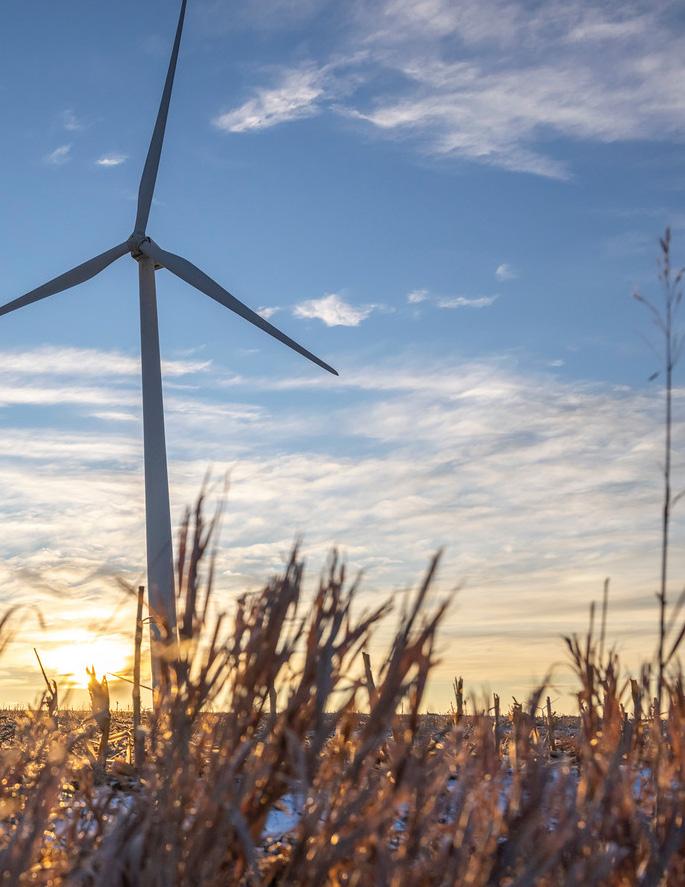

Our Environmental Policy guides us to provide cost-effective, reliable and stably-priced energy while being good stewards of the natural resources, complying with all applicable regulations and demonstrating environmental leadership.
OUR NET ZERO VISION
Over the past 100 years, NorthWestern Energy has maintained our commit ment to provide customers with reliable and affordable electric and natural gas service while also keeping our commitment to environmental sustainability front and center. In early 2022, we took our commitment a step further and announced our plan to reach net-zero emissions by 2050.
Our net zero vision outlines a plan that will continue to serve our customers with reliable, affordable energy, while deploying new, clean technology as it becomes available and cost-effective. We plan to cut emissions on both the electric and natural gas side (Scope 1 & 2) while working with customers to reduce their emissions (Scope 3).
We will continue to increase NorthWestern Energy’s environmental sustain ability and create an even cleaner portfolio of electric and gas resources and infrastructure for our customers and communities. 100% Net Zero by 2050 is achievable for our electric and natural gas business by responsibly taking incremental steps toward this goal and maintaining our commitment to reliable, affordable, environmentally sustainable service capable of meeting the needs of all customers. Public policy support and alignment with customers is essen tial to achieve these goals.
Read our complete Net Zero Vision NorthWesternEnergy.com/NetZero
“We’re required to provide reliability and affordability to our customers, and do it sustainably. We need to do what’s best for our customers and stakeholders, and that’s exactly what we’re doing.”
- Brian Bird, NorthWestern Energy President and Chief Operating Officer
Carbon‑Free Resources
Natural Gas Plants
Fossil Fuel Transition
Electric Operations
Continue transition to a carbon free portfolio Natural Gas Operations
Pipeline Modernization
Replace aging pipe and other infrastructure to minimize leaks
Partner with customers on emission reductions
Enhance energy efficiency programs, expand green energy offering and develop other solutions for customers.
Gas plants needed to offset intermittency of renewable energy and will ultimately transition to peak load only
Enhanced Leak Detection
Use technology to improve leak detection and expand plant emission monitoring
Retire coal plants the earlier of depreciable life or when no longer cost effective
Development of Alternative Fuels
Renewable natural gas and/or Hydrogen
Electric Vehicles
Convert fleet to electric over time and develop infrastruc ture to support EVs
Carbon Offsets
Utilize carbon off sets as necessary
2022 Sustainability Report | 9
Other Actions
NET ZERO BY 2050 NORTHWESTERN ENERGY:
NET ZERO BY 2050
OUR BALANCED ENERGY MIX
Our current energy supply portfolio is built on a bal anced mix of carbon-free resources, including hydro, wind and solar, and traditional thermal resources. In 2021, 56% of our electric generation came from carbon-free resources, with our Montana hydroelectric system contributing nearly 30%.
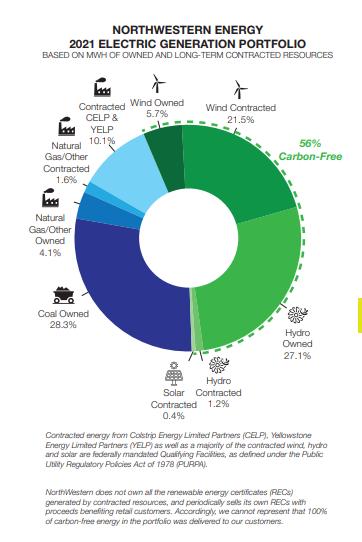
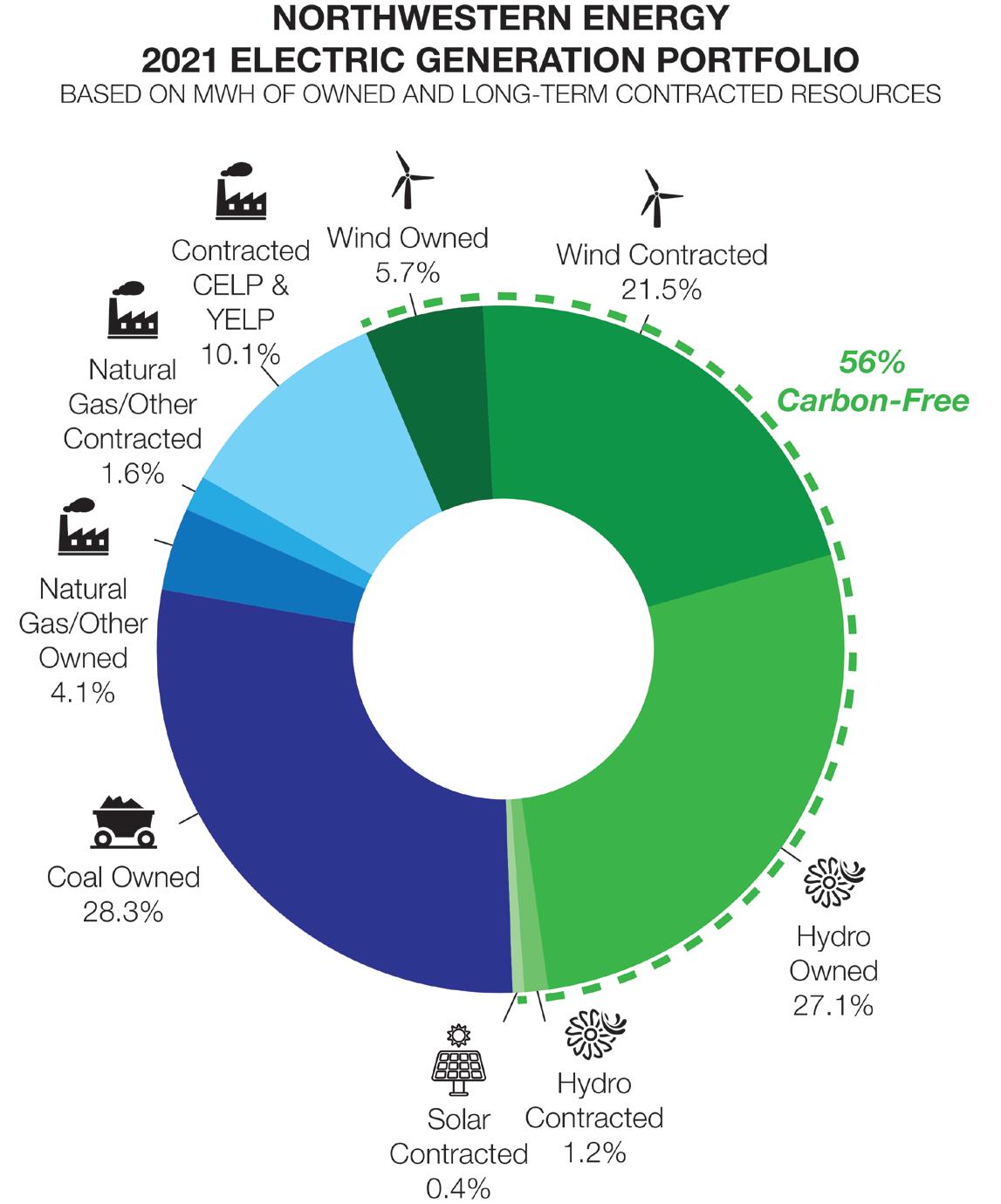

As we transition to a net-zero portfolio, we will continue to focus on supplying our customers with reliable and affordable energy.
Over the last 10 years, nearly all the owned electric generation we have put into service in Montana and South Dakota are carbon-free resources. Over time we expect to close our coal plants at the earlier of depre ciable life or when the plant is no longer cost effective. Until longer duration carbon-free resources are avail able and cost effective, we are likely going to need natural gas fired generation to supplant the output and capacity provided by our coal resources.
In spring 2022, we brought online a new 58-megawatt natural gas generating facility in Huron, South Dakota, and are constructing a similar 175-megawatt facility in Yellowstone County, Montana. These resources will help us transition to a portfolio with more solar and wind resources, keeping the power flowing when the wind is not blowing and the sun is not shining.
After 2035, we plan to add no new carbon-emitting resources to our portfolio.
10 | 2022 Sustainability Report
ENERGY EFFICIENCY
NorthWestern offers efficiency programs to customers. It is a way to help our customers reduce their emissions while also reducing our down stream Scope 3 emissions.
Since the late 1970s, we have performed services and offered programs to assist our Montana customers with the wise and efficient use of energy. Over the years, our Efficiency Plus (E+) programs have included energy audits and virtual home energy assessments, electric and natural gas energy efficiency rebate programs, low income energy assistance, and small-scale renewable activities. We provide training and continuing edu cation to contractors and trade allies.
In 2021, E+ programs produced energy savings totaling 67,939 megawatt hours and 30,075 dekatherms for total savings of $12.0 million for our customers.
Our Efficiency Plus (E+) Programs
The malting and brewing industry in Montana is not only hard working – but working efficiently! From the tractor seat to the bar stool, read about local beer-related businesses that have invested in energy-efficient projects with a goal of energy management best practices. What’s more, they have all received rebates and incentives from NorthWestern’s Energy Efficiency Plus (E+) Pro grams to “go green” while saving some green, too.
Read More in Bright Magazine - https://issuu. com/northwesternenergy/docs/bright_environ ment_2021/s/14669037
NorthWestern Energy offers a variety of rebates and incentives through our E+ Programs. The E+ Programs help Montana customers save money and energy. E+ Program savings are realized through lower customer use of energy resources, which reduces the amount of electricity and natural gas NorthWestern must generate or purchase to meet customer needs. Sev eral options are available to NorthWestern’s Montana residential and commercial customers: simple rebates, weatherization programs, energy assessments, custom commercial incentives and support of renewable energy generation. To learn more, visit NorthWesternEnergy.com/EPlus.
AUTOMATED METERING INFRASTRUCTURE (AMI)
Another way we will help customers reduce their carbon footprint is by providing better information to allow them to manage their energy use.
AMI meters will allow our customers to access realtime information about their energy use and better analytics to make changes to reduce their bills.
On our side of the meter, AMI helps us reduce emissions through two means. First, we will be able to significantly reduce dis patch frequency and miles traveled by our fleet of trucks. Secondly, AMI will help with volt/VAR optimization which will reduce emissions while providing the same power quality.
Installation of automated metering infrastructure is finished in South Dakota and Nebraska and will be completed in Montana over the next few years.
Our advanced meter infrastructure upgrade allows us to detect problems in our electrical system before they cause a power outage.
In Nebraska, where we only provide
we replaced all the encoder receiver
(ERTs) on all our gas meters. Our Nebraska meters are currently being read by a meter-reading truck that is able to collect data from the meters as it drives past them. We’re evaluating solutions to make this a fully automated process.
https://youtu.be/zu_isr_YcaM
2022 Sustainability Report | 11
Watch a video about our meter upgrade project -
Approximately 95,500 new electric meters and gas modules were replaced in South Dakota between 2018 and 2020.
Montana
Advanced Meter Upgrade South Dakota Advanced Meter Upgrade Nebraska Advanced Meter Upgrade
gas
Approximately 590,000 meters and modules will be replaced over four years, from 2021 to 2024. 95,500 590,000
natural
service,
transmitters
GRID AND NATURAL GAS INFRASTRUCTURE
We continue to invest in the modernization of our electric grid and natural gas infrastructure which will provide us with more information, enabling us to reduce the energy needed to serve our customers.
We are deploying small-scale renewables with battery storage in some difficult-to-serve locations to improve reliability in cleaner ways. Initially, small pilots were deployed to better understand how these resources could help improve capacity, reliability and resiliency on our grid. We are planning to roll out this design on a much larger scale to improve rural reliability and to reduce emissions.
ELECTRIC VEHICLES
Our Fleet
We are working to electrify our fleet of 1,200 vehicles and equip ment. In 2022, we began replacing vehicles and equipment at the end of their useful lives with electric alternatives. By 2030, we intend to replace 30% of our lightduty class vehicles (about 100 cars and light trucks), 20% of new medium and heavyduty vehicles, and 30% of new bucket trucks with electric vehicles. In addition, by 2030, all new forklift replacements will be electric. We drive nearly 13 million miles each year to serve our customers, so the emission reductions of progressing to EVs will be substantial.

EV Infrastructure Investments
We are developing turnkey installation of new charging infrastruc ture along highway corridors at commercial customers’ properties in Montana and South Dakota.
In addition, we are conducting an in-depth analysis to design pro grams for business customers to ensure our electric infrastructure is adequate and efficient for significant EV charging growth.
Anyone who watched the 2022 Super Bowl knows car manufacturers are investing heavily in electric vehicles. More electric cars mean more demand for electricity, and at NorthWestern Energy, we have been working to make sure we’ll be able to meet that demand. We’re also working to electrify our own fleet.
Read
-
12 | 2022 Sustainability Report
'14 '15 '16 '17 '18 '19 '20 '21
Usage Cumulative by Year
(in
More in Bright Magazine
https://issuu.com/northwesternenergy/docs/bright_innovation_2022_final_05-19-22_pag es/s/15842308500 1,000 1,500 2,000 2,500 3,000 3,500 4,000 4,500
Tesla Charger
Kilowatt Hour
000's)
Source: Internal Company Data Cumulative historical usage of ten Tesla charging stations across Montana and South Dakota with electric supply provid ed by NorthWestern Energy.
OUR NATURAL GAS OPERATIONS
NorthWestern Energy has roughly 9,700 miles of gas transmission and distribution pipe. In addition, we have gas production, compression and underground storage operations. These gas systems can be a source of leaks – either through normal operation or if damaged. We have already taken numerous actions to reduce methane and carbon emissions on our gas system.
• We have removed and replaced all cast iron and bare steel pipe on our system, which historically have been associated with higher leak rates.
• We replace aging pipe infrastructure and have improved our leak detection capabilities, resulting in better-than-industry average (lower) leaks per mile.
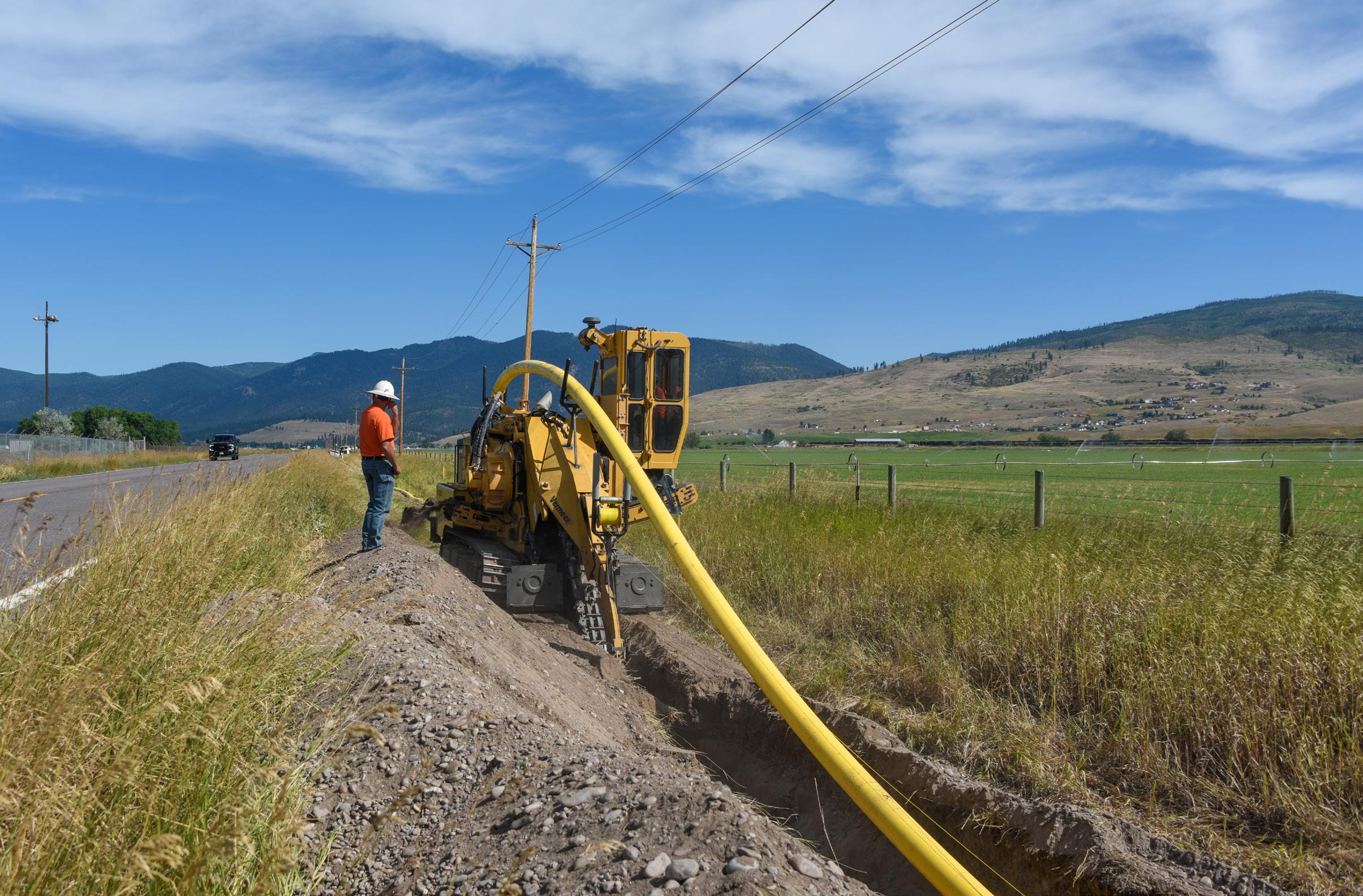
• Through our energy efficiency efforts, we have reduced the amount of gas needed by our customers. Nonetheless, as our region grows, demand for gas grows, especially during periods of peak need such as severe cold temperatures.
Advanced Leak Detection
NorthWestern Energy began “covering” mechanical couplings on older pipelines decades ago to improve cathodic protection on our pipelines as well as minimize the risk of venting natural gas at these couplings. Additionally, we are replacing sections of these lines to improve the reliability and safety of the lines.
Our city gate replacement and farm tap conversion program converts large farm taps to city gate stations to improve the re liability of service to the customer and replaces older equipment with more modern equipment that is less likely to vent. Our city gate replacement program also replaces aging infrastructure with modern control systems designed for low- or no-bleed pressure regulation. We also incorporate monitor regulators to minimize the risk of blowing methane into the atmosphere while maintaining safe, reliable service to our customers.
Our compressor modernization program includes using best available control technology on older compressors. This technol ogy improves the emissions from the units as well as reducing the time and effort to bring units on line when they are needed to meet load demands.
2022 Sustainability Report | 13
Additionally, we recently started the in line inspection of our existing pipelines. Many of these lines are in high- or moderateconsequence areas. Modern technology allows for a thorough inspection of lines, again minimizing the risk of venting gas as well as improving the safety and reliability of the gas transmission system.
• Gas Distribution Infrastructure Program (GDIP) – In 2013, we started the Gas Distribution Infrastructure Program. One aspect of the program is to prevent leaks on aging infrastructure. The GDIP uses data to calculate an asset’s life risk and rank prioritization for end of life replacement.


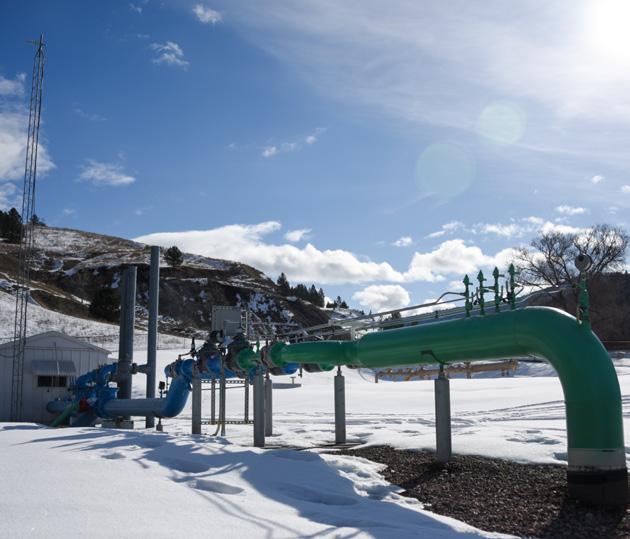
• Annual Leak Survey – Distribution System – We currently conduct annual leak surveys of our distribution system. Our surveys are done more frequently than required by code. With the accelerated leak survey, leaks are found and re paired more quickly than if we only complied with the minimal code requirements.
• Damage Prevention Program – Third parties damage to natural gas infrastructure account for two thirds of all leaks on our distribution system. We work to reduce damage incidents and associated emissions by participating in the Call Before You Dig / 811 system. We also have public safety employees who participate in contractor safety fairs and devel op information for contractors on safe digging practices and the dangers associated with excavating near natural gas infrastructure. Similarly, our public safety program promotes safe digging practices for the public. This program, among other things, educates homeowners on the need to call 811 at least three days prior to any digging.
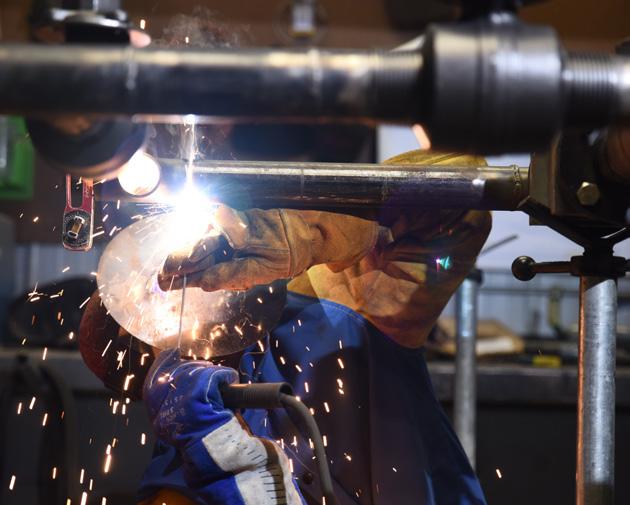

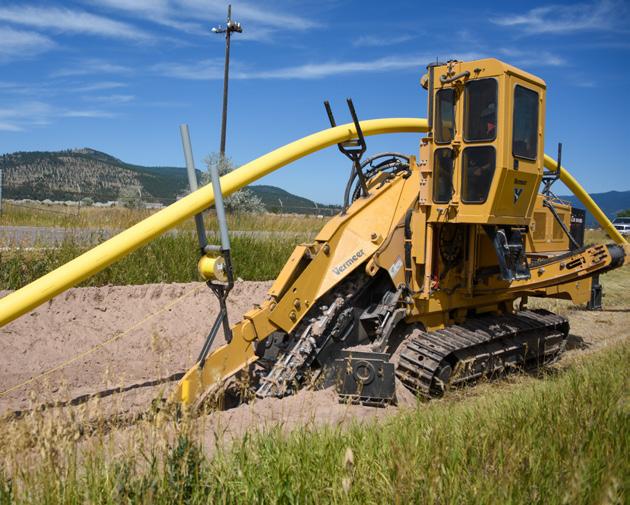
• Storage Well Integrity Inspection Program – In 2018, we implemented an Underground Storage Integrity Management Plan (UGSIM). Part of the UGSIM is an 8 year effort to inspect each underground natural gas storage well, increasing overall well integrity and performance. To date we have replaced leaking wellheads, valves, and fittings. We are also in stalling additional monitoring and implementing procedures to create a culture of proactive leak detection at our storage wells.
• Well Abandonment Program – Since 2015 NorthWestern Energy has plugged 57 non producing wells. The process of plugging a well removes all above grade equipment such as valves and flanges that may contribute to fugitive emis sions.

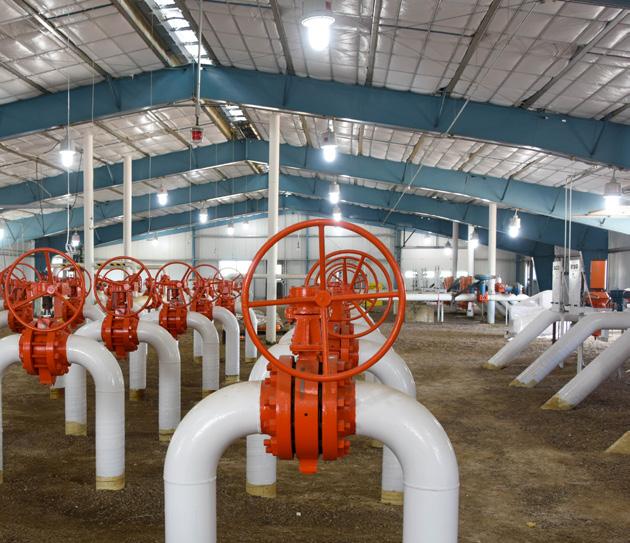
• Production Artificial Lift – Artificial lift systems such as pumping units, velocity strings, and plunger lifts are installed on candidate wells to alleviate the need to blow wells to atmosphere to remove liquids that accumulate in the natural gas well bores. The installation of the artificial lift systems can drastically reduce the amount of gas that is blown into the atmosphere.
• Liquid Removal – At our storage wells we are reducing the need for natural gas emissions associated with liquids re moval from the wellbores and from the liquid traps associated with the pipeline gathering system.
• Temporary Compression on Transmission Pipeline – For employee and public safety, we must lower pressure and remove natural gas from a high pressure transmission pipeline before performing maintenance and other work. We’ve implemented procedures to drawdown pipelines using city gates or compressor stations. This minimizes the need for venting.
Development of Alternative Fuels
Renewable natural gas (RNG), a pipeline-quality gas derived from biomass or other renewable sources, is a critical part of achieving our goal to have net zero methane emissions. In most cases, the sources of renewable gas — such as farms or wastewater treatment facilities — emit methane to the atmosphere. Methane that would otherwise be emitted is captured, conditioned for quality and used in the natural gas system. By capturing more greenhouses gases (in the form of methane) than it emits when burning (in the form of carbon dioxide), RNG is actually considered a carbon-negative fuel and will help compensate for any remaining unavoidable emissions on our natural gas system.
14 | 2022 Sustainability Report
WILDLIFE PROTECTION
AND HABITAT CONSERVATION
As the owner and operator of 11 hydroelectric facilities in Montana, habitat improvement on rivers and tributaries is a high priority for our protection, mitigation and enhancement program (PM&E). We also have an active avian protection program. Some of our recent wildlife and habitat contributions include:
• Creek restoration projects: Each year, NorthWestern Energy funds numerous creek restoration projects to enhance spawning hab itat. To date, nearly $60 million has been spent toward fisheries and wildlife projects under the Missouri-Madison PM&E Program.



• Fisheries enhancement and protection: We partner with Montana Fish, Wildlife and Parks to harvest eggs from wild rainbow trout at Holter Lake, raise the eggs into trout and stock them in Holter and Hauser reservoirs.

• Eagle Protection and Offset Program: NorthWestern Energy’s EPOP program allows wind developers to obtain Eagle Incidental Take Permits by purchasing EPOP credits, which fund power pole retrofit projects to upgrade power lines to meet Avian Power Line Interaction Committee, or APLIC, recommendations, making it less likely for eagles to be electrocuted by power lines.
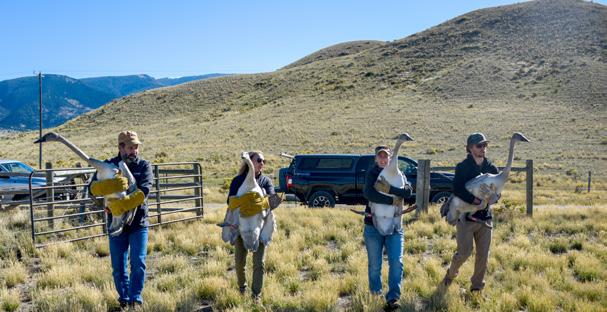

• Osprey protection: NorthWestern Energy installs osprey platforms throughout Montana to give the birds a safe place to build their nests.


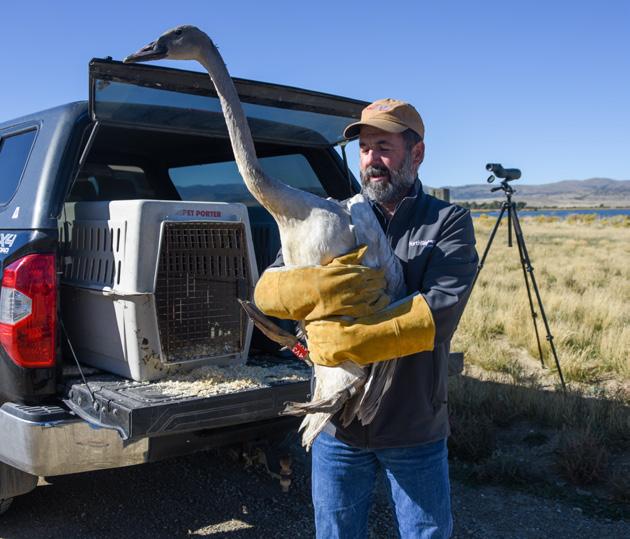


• Swan release programs: North Western Energy has been funding swan releases in Montana’s Madi son Valley since 2015.
Watch a video about our Osprey Protection Programhttps://youtu.be/KeDvBej0RAU
Watch a video of a swan release - https://youtu.be/ aafWgtc-LG8
• Monitoring for rare beetles in Nebraska: When NorthWestern Energy proposed the construc tion of a new pipeline that will run parallel to U.S. Highway 83 south of North Platte, Nebraska, part of the planning process was to survey for American burying beetles, which were once common across the U.S. and are now only found in four states.
ENVIRONMENTAL PERMITTING
NorthWestern’s environmental permitting program focuses on limiting impacts of construction and maintenance activities on air, water and land resources through compliance with local, state, federal and tribal environmental regulations. We construct, operate and maintain our facilities only after the appropriate permits are in place.
We work with various agencies to obtain numerous permits for any project that may affect streams, rivers, wetlands or floodplains. Our En vironmental Permitting and Compliance professionals review company projects during the design phase, determining the needed permits before any work can begin. They then prepare permit applications and act as the liaisons between the permitting authority and our engineers or construction project managers. Many permits include conditions to which we must comply during construction and operation. In 2022, NorthWestern Energy Supervisor Environmental Permitting Sady Babcock and Specialist Environmental Compliance Beth Stimatz were honored with the Montana Department of Environmental Quality Water Protection Bureau’s Environmental Excellence award.
2022 Sustainability Report | 15
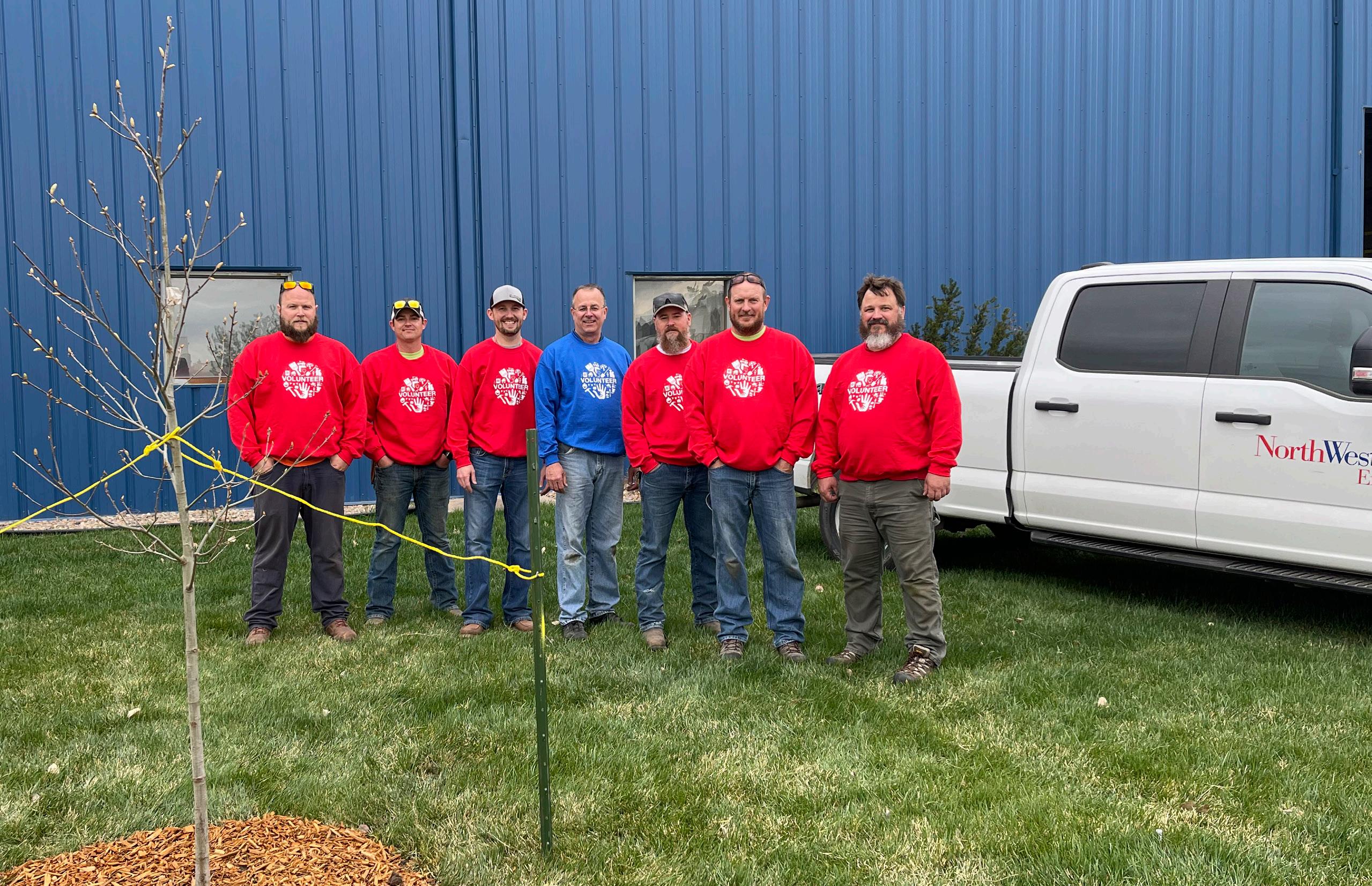
16 | 2022 Sustainability Report SOCIAL We take very seriously the responsibility to serve our customers with reliable, safe and cost-effective energy. We’re also com mitted to giving back to the communities we serve and playing an active role as a corporate citizen of our communities. We are an employer of choice and believe that our employees are our most valuable asset. 2 Customer contact centers, one in Butte, Mont. and one in Huron, S.D. 46,409 Average calls per month $8.6 million of low-income assistance granted in 2021 18 Walk in offices 24/7 Customer access for outages or emergencies 4 min. 58 sec. Average talk time 27.5% of electric customers have advanced meters
OUR COMMITMENT TO OUR CUSTOMERS
We are proud to serve 753,600 electric and natural gas customers across our territory and are dedicated to offering excellent customer service.
• Customer Experience – In 2022, we rolled out a redesigned customer portal. We will continue to add features and ser vices to the portal in coming years, while we continue to enhance our Customer Experience.
• Customer Intent Statement
• Landlord Portal – Our online Property Management Portal allows landlords to confirm when tenants sign up for services and set preferences for what happens when a tenant leaves or is at risk of disconnect for non-pay.
• Flexible payment programs – We understand circumstances sometimes make it difficult for customers to keep up with their bills. We offer payment arrangements for customers to help avoid disconnects. We also offer a budget billing pro gram to help mitigate billing volatility and assist our customers in managing their household budget.
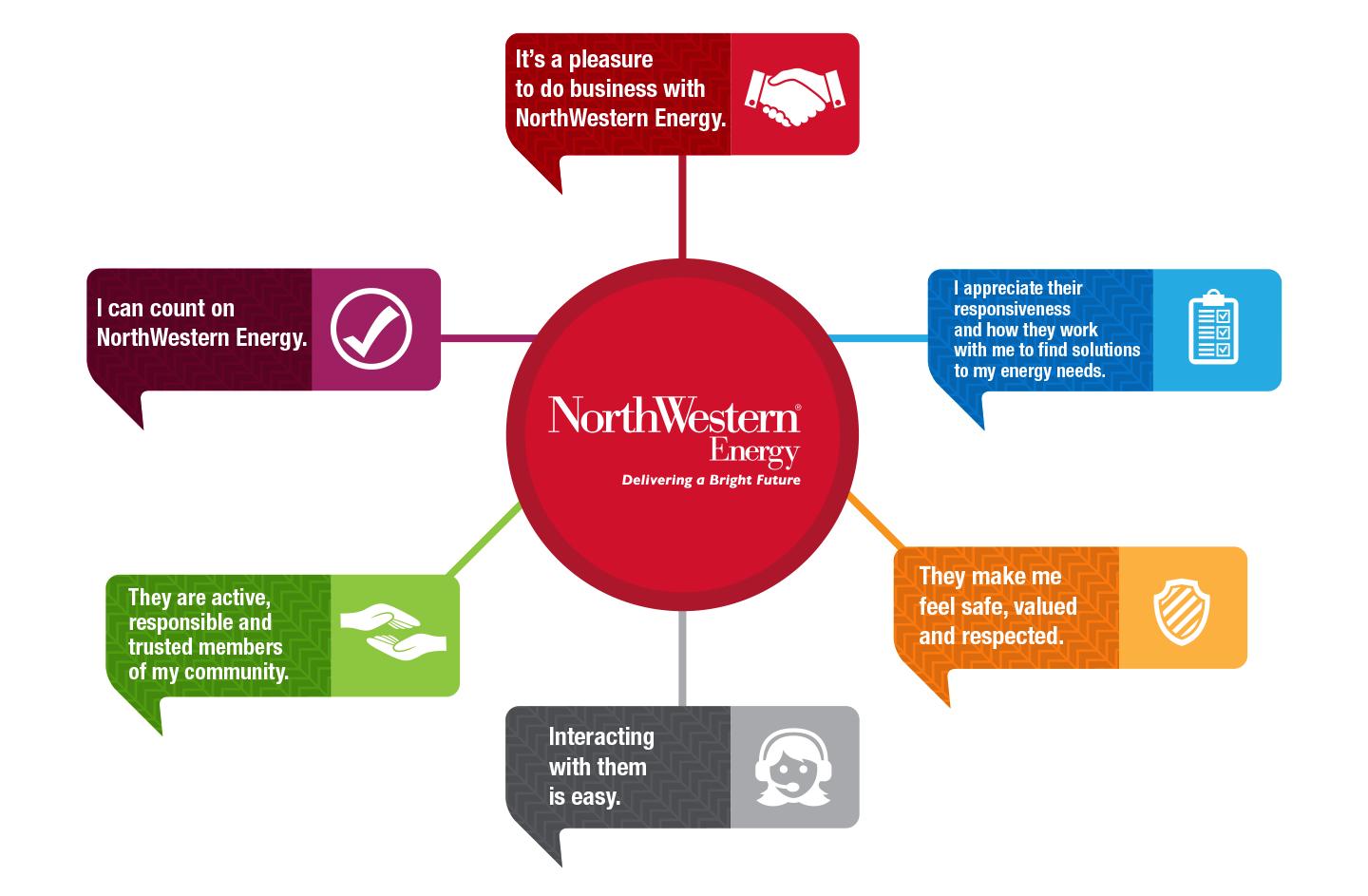
• New payment options – We want to make bill payments as easy as possible for our customers, which is why we offer a variety of payment options. In 2022, we added PayPal to our list of options.
• Construction service enhancements – We’ve worked to make it easier for contractors to reach us about new service installations or moving existing services. We have an online construction application to help contractors or developers get in touch with our estimators and engineers. We also rolled out a dedicated toll free construction line.
• Partnering with state commissions on customer inquiries – We track customer inquiries and complaints that are sent to state regulatory commissions and have a designated customer advocate to follow up with customers who reach out the commission.
• Walk-in centers – We have 18 walk-in offices across our service territory where customers can pay their bills, sign up for service and more. These walk-in offices offer an option for customers who prefer a face-to-face experience. Combined, with our 24/7 emergency line, customers can access NorthWestern Energy customer service around the clock.
2022 Sustainability Report | 17
Affordability
We have a regulatory obligation to provide our customers with reliable energy at an affordable price.
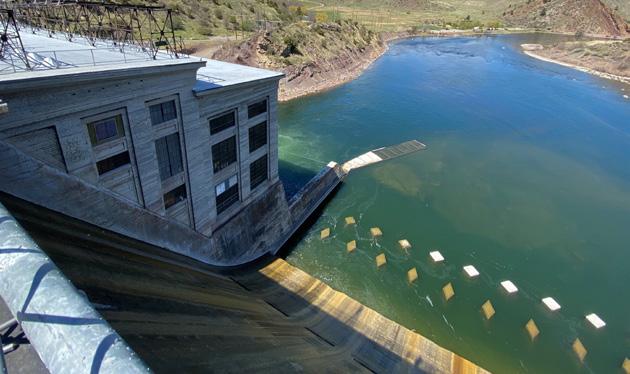
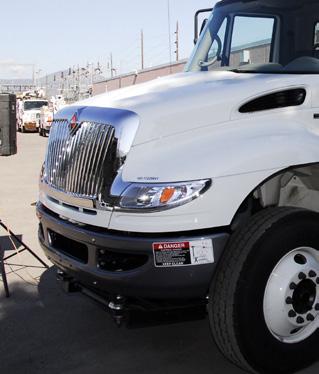

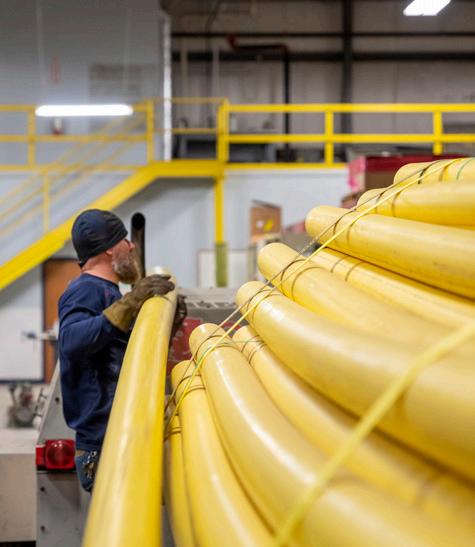
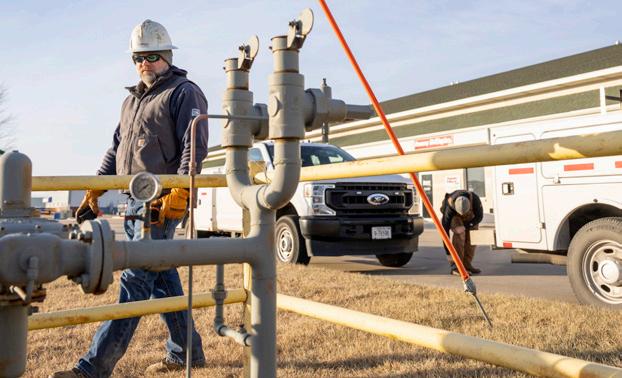
Our residential electric and natural gas rates are below the national average. Our typical residential customer bills for both electric and natural gas are below the national average.
$350
$300
$250
$200
$150
$100

$50
Typical Residential Electric Bill 750 kWh/month National Average
We work with customers who are not able to pay their bills to connect them with energy assistance agencies. We also offer bill discounts and payment plans for customers who qualify. $0
Data above includes publicly traded utility bills in each state they serve. West & Midwest regional utilities are shown for comparison purposes.
Typical Residential Natural Gas Bill Cost per Therm
National Average
Source: EEI Typical Bills and Average Rates Report Winter 2022 January 2022 Bills $0.00 $0.25 $0.50 $0.75 $1.00 $1.25 $1.50 $1.75 $2.00 $2.25
Source: EIA.gov Average price of natural gas sold to residential customers per state as of January 2022 NWE typical bill information based on January 1, 2022 bills for residential customers
West & Midwest regional states are shown for comparison purposes.
18 | 2022 Sustainability Report
Reliability
We offer solid system reliability and are dedicated to keeping customer interruptions to a minimum. In 2021, our customers, on average, experienced roughly 130 minutes of outage time across our service territory. This represents 99.98% reliability and first-quartile performance compared to our industry peers. This is notable, among other reasons, because of the rural na ture of our service territory. Across our service territory, we have 18,659 miles of rural lines, representing nearly 90% of our distribution system, with fewer than 50 cus tomers per mile of line.
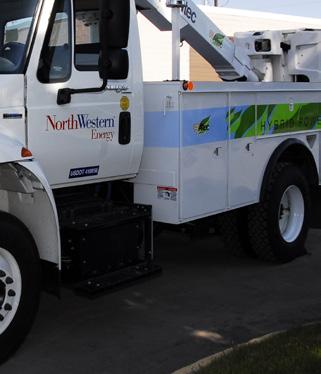
NorthWestern’s
Many of our customers live in rural areas and reside at the end of the (power) line, some literally. When there is an outage, service can’t be restored until issues on those radial lines are resolved. Could redundancy be built into the infrastructure to increase service reliability for rural customers?

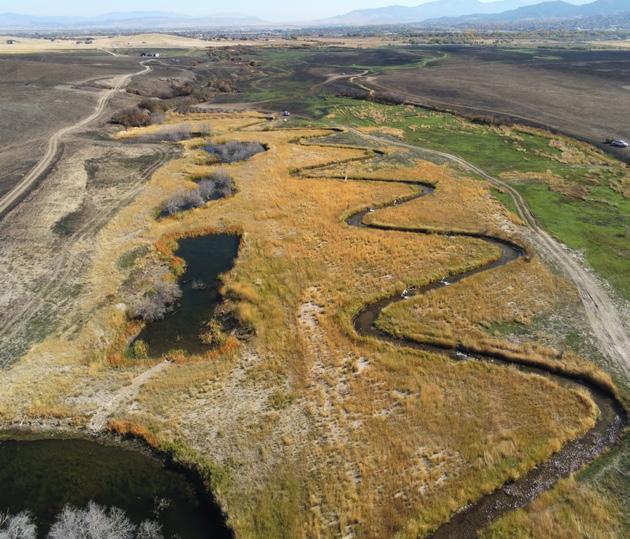
That is what the Beck Hill Microgrid, a pilot project north of Deer Lodge, Montana, which launched in 2015, was built to determine. Read More in Bright Magazine - https://issuu.com/northwesternener gy/docs/bright_innovation_2022_final_05-19-22_pages/s/17021220
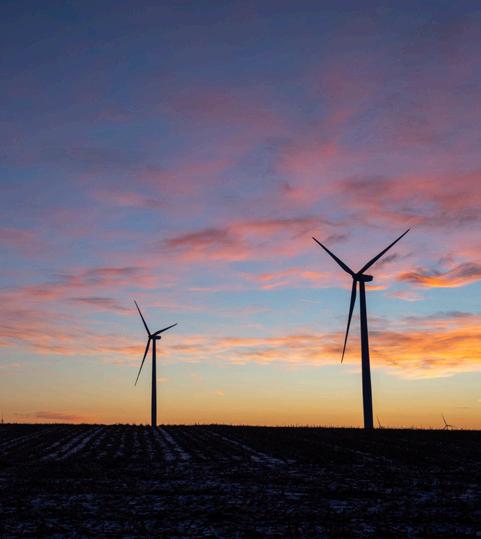
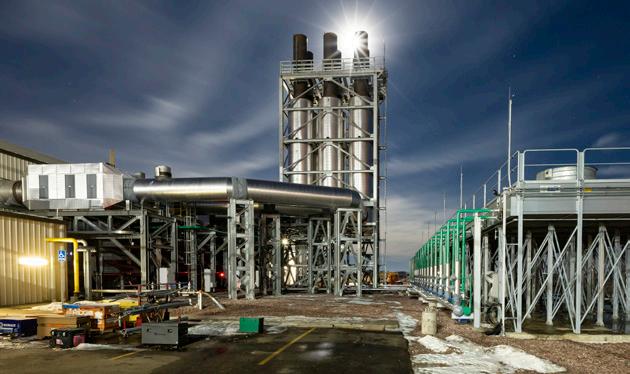

2022 Sustainability Report | 19
*Major Event Day: A day on which the energy delivery system experienced stresses beyond that normally expected (such as severe weather) in which the daily
value.
2021 Reliability Data Points
SAIDI exceeds a Major Event Day threshold
customers)
SAIDI = System Average Interruption Duration Inde x (Total minutes every customer was without power due to sustained outages divided by total number of
SAIFI = System Average Interruption Frequency Index (Number of sustained customer outages experienced by all customers divided by total number of customers)
143.04 121.81 1.313 1.128 108.91 108.00 Including Major Event Days* Excluding Major Event Days*
CAIDI = Customer Average Interruption Duration Index (System Average Interruption Duration Index (SAIDI) divided by System Average Interruption Frequency Index (SAIFI))
Our commitment to public safety
Every year, NorthWestern Energy promotes pipeline awareness and safety through mailings, trainings, booklets, flyers and education materials. We also conduct on going inspections of our natural gas infrastructure, looking for signs of leaks and corrosion. NorthWestern owns and operates nearly 9,700 miles of natural gas pipelines. The safety and integrity of these pipelines is our top priority. In 2021, we spent $1.78 million to deliver our safety messages to audiences of all ages.
Lower Customer Costs through Energy Efficiency
NorthWestern Energy has more than 40 years’ experience working with customers to promote the wise and efficient use of electricity and natural gas. Energy efficiency programs were first offered to our customers in the late 1970s and have contin ued in some form ever since.
We offer programs and energy efficiency information under the NorthWestern Energy sub brand of Efficiency Plus, or E+. Helpful energy savings tips, videos and other resources are available to assist our customers with their energy efficiency needs.
In addition, Montana customers fund energy efficiency as a least cost resource in supply rates and through the Universal Sys tem Benefits Charge (USBC). Current programs include rebates for our commercial electric customers, along with custom in centives for electric and natural gas commercial and industrial facilities, and free energy audits for qualifying homes and small businesses. Through a contract with the Montana Department of Public Health and Human Services, homes of income quali fied customers receive free weatherization services. A few small scale renewable projects at non profit and government/pub lic buildings also receive incentives funded through the USBC.
We offer virtual home energy checks to our Montana customers to help them determine how they can save money through energy efficiency measures. Our energy audits used to be offered in-person, but we transitioned to a virtual model during the pandemic, which has been well received by our customers.
Green Energy Options for Customers
Watch a video about our Home EnergyCheck programhttps://youtu.be/8iLkNbbSzzY
NorthWestern’s electric supply portfolio in Montana provides our customers with electricity that is roughly 60% carbon free. However, we also give our Montana electric customers an option to make their energy even cleaner. Customers can "green up" their electricity usage without having install anything or make a big investment. The E+ Green Program gives customers an option to reduce their electricity-based carbon footprint and supports the development of new renewable generation.
The E+ Green Program is offered to Montana electric customers as a regulated program as required by Montana law. North Western Energy supports the E+ Green program with renewable energy certificates (REC) purchased from the Bonneville Environmental Foundation from resource in Montana, Wyoming or the Northwest as available.
Cyber security and scam prevention
NorthWestern Energy has continued to focus on cyber security concerns. We’ve made significant investments to protect our grid from cyber threats and also protect our customers’ private information from data leaks. Scams nationwide often target electric and natural gas customers, threatening to discon nect their service if a payment isn’t made immediately. We work to monitor scam activity and alert our customers to any suspicious activity. We’ve helped shutdown numerous fraudulent phone numbers by reporting them to the authorities. We also participate in Utili ties United Against Scams, a group made up of energy companies across the U.S. working together to raise awareness and educate customers about scams.
Watch a video about our scam prevention effortshttps://youtu.be/5bsC4V9ZH8M
We are subject to the potentially adverse operating and financial effects of terrorist acts and threats, as well as cyber-at tacks, physical security breaches and other disruptive activities of individuals or groups, and theft of our critical infrastructure information. Our generation, transmission and distribution facilities are deemed critical infrastructure and provide the frame work for our service infrastructure. Cybercrime, which includes the use of malware, phishing attempts, computer viruses, and other means for disruption or unauthorized access has increased in frequency, scope, and potential impact in recent years. Our assets and the information technology systems on which we depend could be direct targets of, or indirectly affected by, cyber-attacks and other disruptive activities, including those that impact third party facilities that are interconnected to us. Any significant interruption of these assets or systems could prevent us from fulfilling our critical business functions including delivering energy to our customers, and sensitive, confidential and other data could be compromised.
Bi-annually NorthWestern Energy participates in GridEx. This is the largest grid security exercise in North America and is host ed every two years by North American Electric Reliability Corporation’s (NERC) Electricity Information Sharing and Analysis Center (E-ISAC). GridEx provides members and partner organizations a forum to practice response and recovery from coordi nated cyber and physical security threats and incidents. The outcomes and lessons learned are used to enhance our security position. The next GridEx exercise will take place in November 2023.
20 | 2022 Sustainability Report
OUR COMMITMENT TO THE COMMUNITIES WE SERVE
Our economic impact
NorthWestern Energy generated nearly $2.6 billion in total economic impact across our service area in 2021.
These figures were determined by Bozeman, Mon tana-based Circle Analytics using a database model that factors in our revenue and the impact of electric and natural gas energy companies.
Economic vitality is crucial to the future of Montana, Nebraska and South Da kota, and for more than 100 years, NorthWest ern Energy has held a strong commitment to the communities it serves. The mission of NorthWestern’s economic development team is to help retain existing jobs, promote business expansion and recruit new businesses in the communities we serve.
This is accomplished alongside the support of local and statewide economic development entities and initiatives and partnering with community, state and national leaders in the region we serve.
Our local community-based economic development team members serve as essential grassroots contacts for retail and small commercial/industrial opportunities. They serve as resources for expertise in the areas of energy management and utility operations.
Charitable Giving and Volunteering
Our employees volunteer with a wide range of organizations. Here are just a few examples:
• Ricky, District Superintendent in Marion, South Dakota, volun teers as the Fire Chief at the Marion Volunteer Fire Depart ment.
• Retiree Lisa has volunteered with the Beadle County Human Society for 30 years.
• Wildlife Biologist Marco helps the Yellowstone Audubon Society with a nest monitoring program.
• Engineer Noah supports the Kalawa Library and School in Kenya through fundraising, web site design and more.
• Customer Solutions Technolo gist Malina helped raise funds to build a memorial for Butte’s 1895 disaster.
NorthWestern Energy wants to make the communities we serve better places to live, work and prosper. That's why we're proud to donate to a wide range of worthy causes.
In 2021, we gave nearly $1.8 million in donations, sponsorships, scholarships and economic development.

2022 Sustainability Report | 21
$2.6 BILLION Gross Economic Output 408 Unique Communities Served 15,194 Additional jobs supported in the economy
Part of our charitable giving program is our employee volunteer programs. We encourage employee volunteerism by offering paid time off for volunteer activities.

NorthWestern pays employees to volunteer, gives grants to employees’ charities
We offer two different employee volunteer grant programs. Through our Employee Volunteer Program, NorthWestern Energy will donate up to $400 to each nonprofit organization our employees serve. With our Team Grants, we give $100 for each em ployee who volunteers at an event. In 2021, we awarded $54,900 to 103 nonprofits through the Employee Volunteer Program and Team Grant Program.
In addition, employees can get paid by NorthWestern when they volunteer. Employees can volunteer for a cause of their choice up to 8 hours annually – more if they combine it with PTO.
“There is nothing quite as humbling and rewarding as seeing your hard work affect the lives of others. The experience is truly unparalleled to witness,” said Tess, a regulatory affairs analyst with NorthWestern Energy. Through the years, she has helped her Butte, Montana community earn grants through NorthWestern’s programs.
“NorthWestern Energy supports and encourages employees to partake in volunteerism and provides grants for our participa tion. Sponsorship is a vital component for any nonprofit organization and I appreciate that my workplace is willing to contrib ute to an organization I support,” Tess said.
Employees can also buddy up for team grants and earn $100 per employee when volunteering together at such things as trail building days, United Way Day of Caring or even fundraising walks.
“I previously sat on the board for American Cancer Society and participated in putting on Relay for Life annually,” Tess said. “Now I’m involved in Silver Bow Youth Leaders!”
Employees are happy to see these entities receive grants for the time they spend helping their communities. It’s a wonderful bonus to be able to earn a grant for your favorite charity!
22 | 2022 Sustainability Report
Transition to Clean Energy for Communities

Many communities in our service territory have set climate action goals, and we are working with those communities to help them set achievable standards and help them meet their goals. We created a new position, Manager of Sustainability, to work directly with communities, as well as national corporations and local businesses, that are interested in maximizing the renewable energy they use.
Enhanced Wildfire Mitigation Plan
We are developing an Enhanced Wildfire Mitigation Plan to help us define how we will operate and maintain our system to lower the probability of an accidental ignition. The plan also expands on our Hazard Tree Program, which focuses on mitigating vegetation-related fire risk, as well as the reliability-focused programs that mitigate fire risk.
Components of our Enhanced Wildfire Mitigation Plan:
NorthWestern Energy Manager of Sus tainability John Bushnell uses his three decades of experience in the energy industry to assist Montana, South Dako ta and Nebraska communities with their climate objectives.
Learn More in Bright Magazine - https:// issuu.com/northwesternenergy/docs/ bright_environment_2021/s/16360328
• Situational Awareness – Ability to understand changes to the environment or system allowing for faster changes to operational practices.
• Operational Practices – Defining how NorthWestern will operate and maintain its system to lower the probability of an ignition.
• System Preparedness – This describes the Forest Management Program that focuses on fire mitigation as well as the reliability-focused programs that mitigate fire risk
• Vegetation Management – Similar to system preparedness, this describes the expanded Hazard Tree Program that focuses on mitigating vegetation-related fire risk as well as the reliability-focused programs that mitigate fire risk.
• Public Communication and Outreach – Opportunities to advance our training in communicating to our customers as well as the beginning steps to set up resiliency zones for customers with services impacted by wildfire.
2022 Sustainability Report | 23
EMPLOYEE VALUE
Our ability to fulfill our mission and serve our customers depends on our ability to employ a highly skilled workforce. In order to attract and retain the best employees, we offer attractive salaries, a performance-based annual incentive program, a retire ment plan with a robust company match, physical and mental health programs, generous paid time off allotments and several highly-subsidized medical, dental, vision and mental health insurance program options.
Goals are established at a high level to guide the efforts of NorthWestern Energy. Each successive level in the organization sets goals that supports the level above. It is a top-down process that also allows the individual an opportunity to have a voice in their own goals.
NorthWestern uses the cascading process because it helps align the efforts of our employees around objectives that are important to the short- and long-term success of the organization. It also sets clear performance expectations, increases com mitment to our goals and helps everyone understand how they are able to contribute to the success of the overall organiza tion.
At NorthWestern Energy, we foster of culture that values safety, diversity, respect and trust. Our success is built on employees feeling empowered to take initiative, voice their opinions and build on their experiences. We believe everyone should be treated with respect regardless of their background or appearance and where the dignity of every individual is held in high regard.

Respecting the differences in those around us fosters engagement, productivity and innovation. Treating people with respect on a daily basis is one of the most helpful things a NorthWestern Energy leader can do. Intentionally building a culture of respect helps us attract, retain, and leverage the contributions of all our talented employees.
Respect is the “R” in NorthWestern’s “SERVICE” values, our core values that embody the Code of Conduct and Ethics at NorthWestern.
NorthWestern strives to be transparent to all our stakeholders, and that includes our employees. With that in mind, NorthWest ern uses two main channels to communicate. The Compass is a weekly email that every supervisor in the company receives. It includes leadership messages from executives and directors, development messages meant for quick digestion in a man ager’s busy week, a quick bullet list of to-dos to help managers with work flow, and links to study the week’s topic in greater detail if desired.
In addition, all employees receive FYIs, when warranted. All company news comes through this channel, from breaking cor porate news or employee group restructuring, to implementation plans of new processes that will impact the entire compa ny. When the news is most important, supervisors are informed first through The Compass, so they can be ready to answer questions from their teams.
24 | 2022 Sustainability Report
NorthWestern Energy aspires on an ongoing basis to be a great place to work for all its employees. In order to do this, we must hear from each of our employees to effectively monitor and manage our culture.
In 2022, we hired an independent consulting firm, Great Place to Work, to conduct a confidential employee survey and ana lyze the results. The firm certified NorthWestern as a Great Place to Work based on employee responses.

The survey data is only used to understand our current employee engagement levels; it is also used to understand our cul ture from a Diversity, Equity and Inclusion perspective and to inform programs aimed at workforce attraction and retention.
To ensure confidentiality, Great Place to Work captures all survey responses through its website. After the survey is closed, Great Place to Work uses a reporting and analysis method that further ensures individual responses remain anonymous.
Through the survey we can understand where we excel and where we have opportunities to improve.
NorthWestern’s stellar culture showed through in our recent certification as a Great Place to Work. In the sur vey, employees overwhelmingly agree:
• This is a physically safe place to work.
• People here are treated fairly regardless of their race.
• People here are treated fairly regardless of their sexual orientation.
• They are able to take time off from work when they think it’s necessary. 66% of our employees say NorthWestern is a great place to work compared to 57% of employees at a typical U.S.-based company.
Celebrating the accomplishments of our employees Anniversary recognition
NorthWestern’s Anniversary Recognition Program celebrates service anniversaries and makes them meaningful for employ ees. Employees celebrating their 5-, 10-, 15-, 20-, 25-, 30-, 35-, 40- and 45-year anniversaries receive a yearbook which contains comments, kudos and even photos from an employee’s supervisors and peers. Employees can also choose a gift of their choice to commemorate their time with the company so far. Our average employee tenure is about nine years.
Professional
NorthWestern recognizes employees who earn professional certifications recognized by professional associations. Employ ees who earn a qualifying professional certification are awarded a $250 bonus. For example, a common professional certifi cation recognized at NorthWestern is the Principles and Practice of Engineering (PE) exam.
2022 Sustainability Report | 25
2021 Turnover *NWE Annualized Turn Rate - Regular Employees 11.3% Benchmark Turnover by category Turnover % Utility Industry Benchmark 12% Company size (1001-5000 employees) 22% Publicly traded Companies 24% *Source
Turnover Survey
is 2021 Gartner
Certification Recognition
86% I am able to take time off work when I think it’s necessary 82% When you join the company, you are made to feel welcome 84% People here are given a lot of responsibility 81% When I look at what we accomplish, I feel a sense of pride 80% I feel good about the ways we contribute to the community
Employee Safety
The best company anyone can work for is the company that gets its employees home each night the way they arrived. NorthWestern’s num ber one goal is employee health and safety. NorthWestern has a strong safety culture. We watch out for each other, and we keep each other safe.
Over the last several years, we adopted a MoveSafe program to help employees avoid injury while performing day-to-day work functions. MoveSafe encourages better posture, improved flexibility, and safe movements – which, if implemented consistently, should result in reduced muscle stiffness, soreness, and the potential for injury. Since implementing our MoveSafe program, we’ve seen a decline in sprains and strains. Nothing is more important than the safety of our employees.
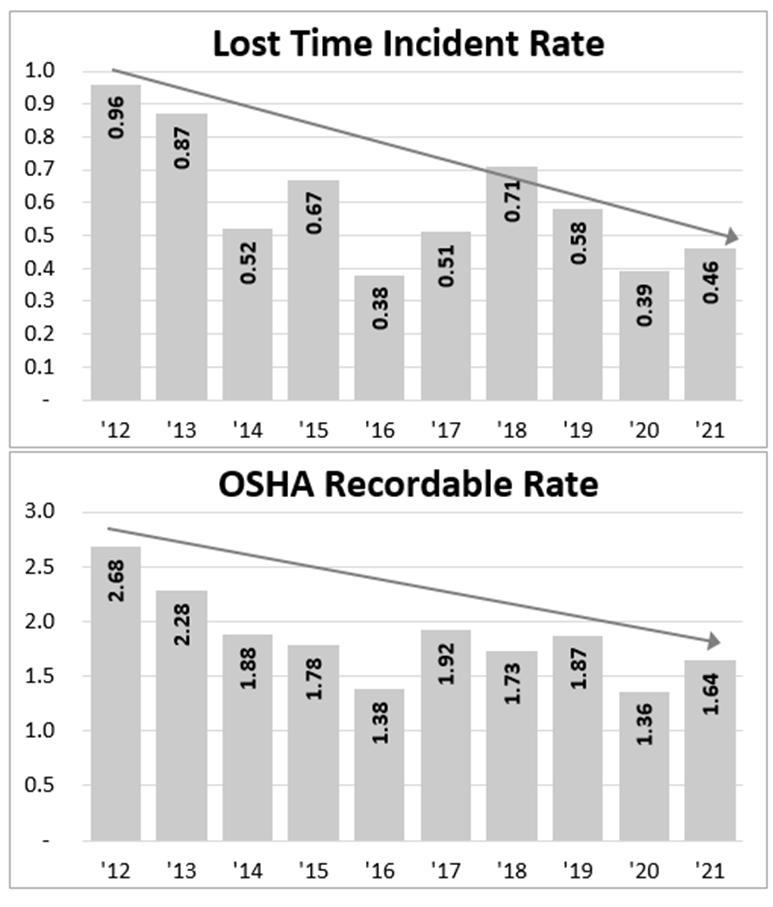


26
When entering the powerhouse at Thompson Falls Dam, one of the first things you’ll see is a large digital sign showing the number of days without recently received the OSHA Voluntary Protection northwesternenergy/docs/bright_magazine_vol1_
Total employees: 1,483
Montana employees: 1,187 South Dakota and Nebraska employees: 296
Montana gross payroll: $132.6 million
Total employees over time:
2021 1,483 2020 1,530 2019 1,533 2018 1,532 2017 1,560 (As of Dec. 31 for each year)
South Dakota gross payroll: $28.8 milion
Nebraska gross payroll: $2.7 million
*As of year-end 2021.
**The percentage of minority employees is the same representation of minorities in our service territories.
2022 Sustainability Report | 27
Workforce Profile
Employees represented by Collective Bargaining Unions*: 37% of Montana employees are represented by a union 56% of South Dakota/ Nebraska employees are represented by a union
Workforce diversity*: 27% women Total employees 26% women Management 44% women Executive team 2.9% of total employees Minority group**
Employee gross payroll: $164.1 million*
Employee Pay and Benefits
Taking care of our employees’ needs is a critical part of the NorthWestern Energy culture. Our benefits offer support for our employees and those closest to them. We offer competitive, cost-effective, and well-rounded benefits. We are an Equal Opportunity Employer and offer attractive salaries based on qualifications. From a healthy employer contribution to retirement plans, to generous paid time off, our benefits are designed to meet the varied needs of our employees.
For executives, we place a significant portion of executive pay at risk by granting incentive awards that are paid, if earned, based on continuing annual and long-term individual and company performance. We do not promise multiyear guarantees for salary increases or offer golden parachute agreements. Nearly 80% of targeted CEO compensation is at-risk in the form of performance-based incentive. Our CEO to average employee pay in 2021 was 28:1, compared to an average of 42:1 in our peer utility group and 79:1 among electric and natural gas companies.
COMPETITIVE SALARY
We offer competitive compensation with performance-based wage increases and annual incentive opportunities.
SHORT TERM AND LONG TERM DISABILITY
Our short-term and long-term disability is paid by the company to support income replacement in the event of injury or illness.
401K PLAN
We offer a 401K with a company match up to 4% and non-elective contribution up to 7%.
HEALTH CARE AND WELLBEING PROGRAMS

Our health insurance includes dental and vision for you and your dependents.
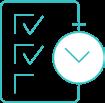
EMPLOYEE STOCK PURCHASE PROGRAMS
Employees have the opportunity to purchase NorthWestern Energy stock at a discount.
SPENDING ACCOUNTS
We offer Health Savings Account (HSA), Health Care and Dependent Care Flexible Spending Account (FSA). Employees can earn money toward their HSA through participation in our wellness program.
HYBRID WORK ENVIRONMENT

We offer the flexibility for employees to work part-time remotely, if their position allows.
LIFE INSURANCE

We offer company-paid basic life, with additional employee, spouse and child coverage available.
TUITION REIMBURSEMENT
Employees can receive up to $5,250 per year of tuition reimbursement.
Our assistance program offers free counseling
PAID TIME OFF (PTO)
Being able to take time off when they need it is a top survey response from our employee. We offer PTO, available starting on your first day.
MILITARY LEAVE OF ABSENCE

We grant unpaid military leave of absence to an employee fulfilling a military service obligation or commitment.

NorthWestern Energy cares about employees as a whole person. We offer wellbeing program giving employees access to free counseling service in the form of our Employee Assistance Program.
Earn incentives with our wellbeing program
NorthWestern is committed to employee health and safety in the workplace and at home. Employees and benefit-enrolled spouses are eligible to participate in our Employee Wellbeing Program. By participating in the program, employees have the opportunity to earn incentives such as:
• Additional company contribution towards medical premium costs



• Additional company contribution to a Health Savings Account (HSA)

28 | 2022 Sustainability Report
Workforce Development & Training

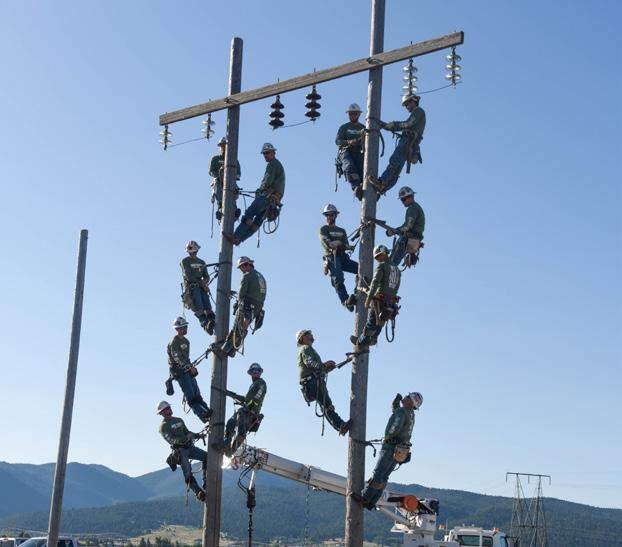






NorthWestern Energy strongly believes in the development of its employees. We invest significant resources in maintaining a culture that supports the ongoing development of our workforce. Along with a robust training program when new employees start, we also offer new employee orientation within the first six months of employment, and a chance to create a new hire development plan with the employee’s supervisor. We also offer tuition reimbursement for those studying in a field related to our organization. In addition, employees find our vice presidents and CEO to be very accessible, and many have personally met our board of directors through their personal involvement helping build employee acumen as part of our development programs, and commonly at employee breakfasts as part of board meetings held in locations throughout our service territory.

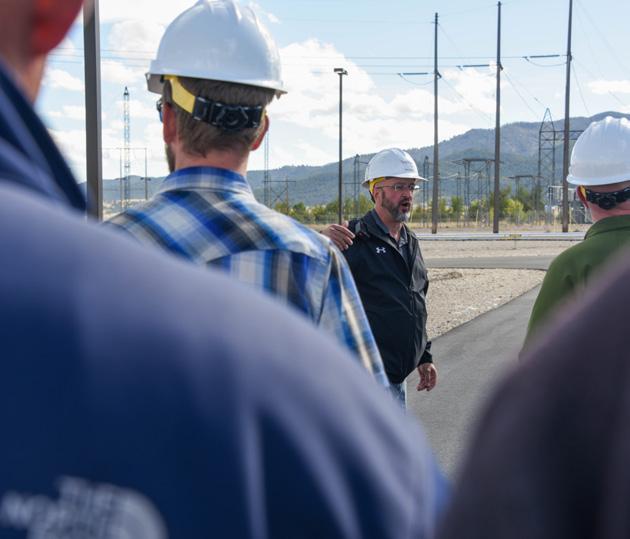
Leadership NorthWestern develops all employees treating them as leaders whether they have a leadership title or not, and builds relationships and trust throughout company

There is always a high level of interest among NorthWestern’s employees for its annual Leadership NorthWestern program, which started in 2009 as a way to build relationships across the company and to build potential leaders. The yearly class of about 30 employees is selected from a pool of applicants and nominees to represent a variety of functions and levels across the organization as well as a variety of work locations within the three states we represent. This program provides participants with a unique opportunity to learn about NorthWestern Energy and the environment in which it operates, the opportunity to network with others across the organization and to gain a better understanding of leadership responsibilities at NorthWestern Energy. Their experiences include interacting with internal and external experts, online learning and participating in tours of NorthWestern facilities and other places of significance to the organization.
The class is broken into five teams, and each team is tasked with creating and presenting a strategic project to executives at the end of the class. Through the years, several of the leadership teams’ projects have been adopted by the company, including most recently, our LED streetlight recycling program and our Sustainable Procurement and Practices Guidelines. In addition, another team recently helped our Business Technology team identify tasks that could potentially utilize bots (Robotic Process Automation) to simplify workloads.
Leadership NorthWestern is a core driver of building relationships and business acumen. It makes our leadership and even our Board of Directors highly accessible to individual employees of the company.
“Leadership NorthWestern, really opened up the company to me. It gave me a better picture of all that we do together on a daily basis to keep this place running smooth,” said Erica, Project Analyst with NorthWestern. “This program also introduced me to other like-minded people and allowed me to put myself out there to let people know I’m interested in learning more and being here. I do believe the leadership program has helped me to advance my career by helping place me in front of the people I needed to meet to prove myself in this professional environment. Not only that, but I now have some amazing friends I otherwise would maybe not have had the chance to meet.”

2022 Sustainability Report | 29
We invest in our supervisors
NorthWestern’s Leadership Boot Camp was started in 2016 as a direct response to our employee engagement surveys and continues as an exemplification of the organization’s commitment to supporting and growing its leaders.
The company selects 20 employees for the 10-month program that covers topics such as coaching, communication, devel oping others, delegation, change management, performance feedback, financial acumen, and rates and regulation. It is an intensive training program for supervisors, managers and leaders that also includes monthly touch point with a mentor within the company and a check-in with the group to share stories of growth and awareness within their leadership roles.
“I attribute my growth as a leader and in the company to the many lessons, conversations and relationships I was introduced to in Leadership Boot Camp,” said Sarah, a supervisor in Customer Care. “Everything in this course brought value to me as a supervisor and an individual; whether it was something new that I had not encountered or a more in depth look into themes that I had been exposed to before.”
For example, two subjects she has found she brings into almost every interaction or thought process are emotional intelli gence and her leadership strength assessment.
“Knowing my strengths but always being mindful to stay out of the basement when utilizing them helped me to become more confident in my interactions. For emotional intelligence, I initially focused in on my own emotional triggers which helped me to accomplish more meaningful and successful interactions,” Sarah said.
Sarah and other employees who have gone through Leadership Boot Camp share the lessons they’ve learned and the tools they’ve gathered with other employees throughout NorthWestern Energy, which helps growth and development throughout the company. The emphasis on networking as part of the program and the inclusion of mentoring facilitates sharing among and beyond class participants.
In addition to Boot Camp, NorthWestern also assigns new supervisors a learning plan with milestones that help them succeed and grow as new leaders within the company.

Our new hires get Powered Up
We invest significant resources in maintaining a culture that supports the ongoing development of our workforce. NorthWest ern Energy strongly believes in the development of its employees. Along with a robust training program when new employ ees start, we also offer new employee orientation, called Powered Up, within the first six months of employment, and oppor tunity to create a new hire development plan with your supervisor.
30 | 2022 Sustainability Report
Cesar, customer associate (CA), is working on his master’s degree in accounting. The father of three has been a CA since 2018, and is grateful for the financial support he’s receiving from NorthWestern through the Education Reimbursement pro gram.
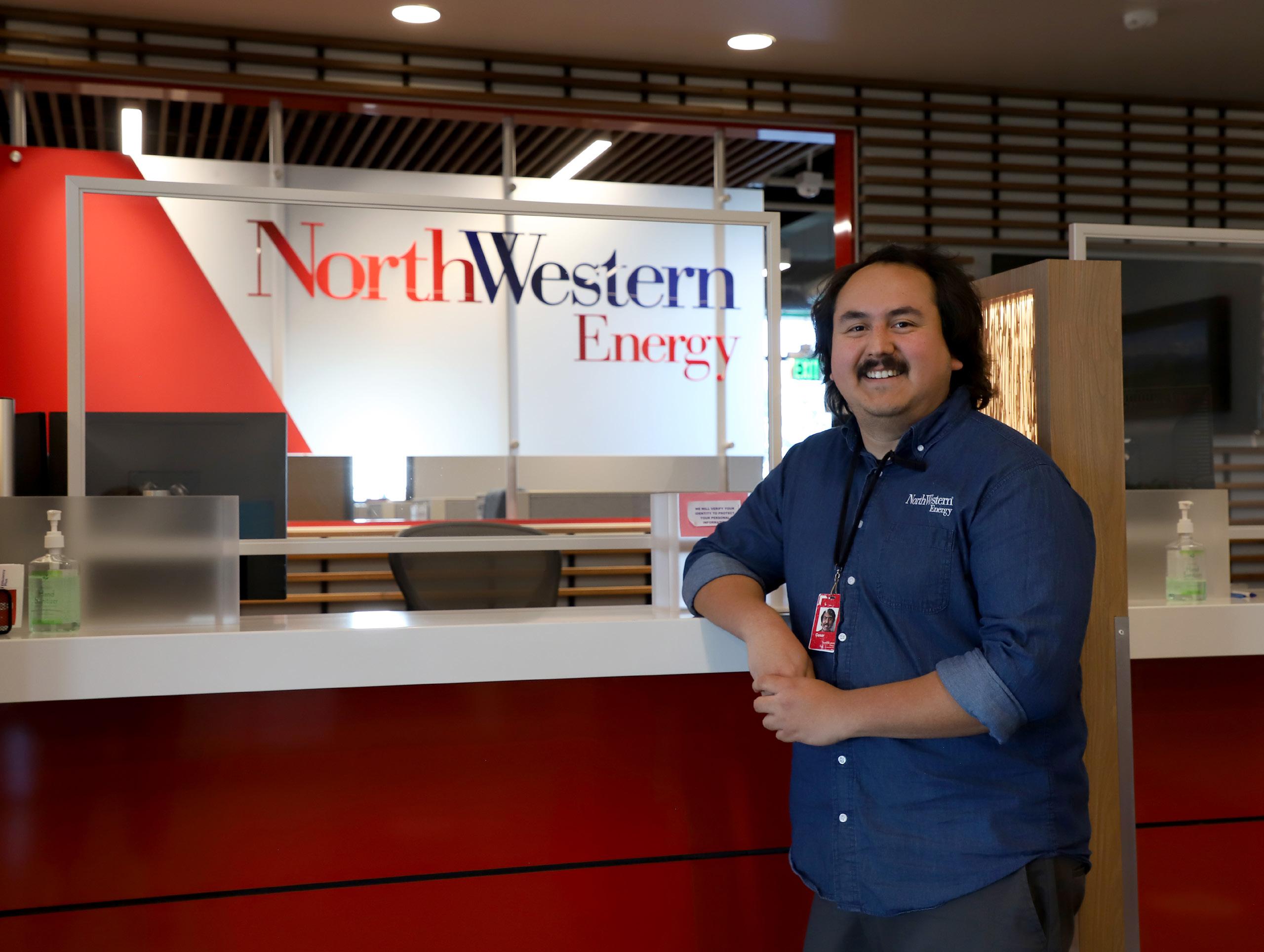
Every year, employees at NorthWestern Energy earn bachelors and master’s degrees that the company helps pay for. Em ployees can receive up to $5,250 per year of tuition reimbursement. Some employees take a few courses a year, getting their education entirely reimbursed by the company.
When Cesar first mentioned going back to school to his supervisor, she explained the tuition reimbursement program to him. He was concerned about paying for his advanced degree while balancing his fulltime job, his duties as a father and husband with school, but the financial support NorthWestern has given has helped him concentrate on his grades.
“I saw some internal postings for jobs like internal auditor, accountant and financial auditor and I said, “I feel like I can take that on, I just don’t have the background for it,” Cesar said.
In 2021, 18 employees received tuition reimbursement. In the past five years, 74 have participated.
The policy, which was first established in 2005, provides a mechanism to support professional development through formal education for employees. Skills and knowledge of NorthWestern Energy employees are critical to the success of the organi zation, and the Education Reimbursement program encourages personal development through formal education, to maintain or improve job-related skills, and enhance an employee’s ability to compete for reasonably attainable jobs within NorthWest ern Energy.
Cesar, who has an undergraduate degree in mathematics and economics, considers himself a lifelong learner. He will be finished with his masters in 2023, and hopes to land one of the jobs that originally caught his eye.
2022 Sustainability Report | 31
NorthWestern reimburses employees working toward higher education degrees
Numerous outside training options available to employees



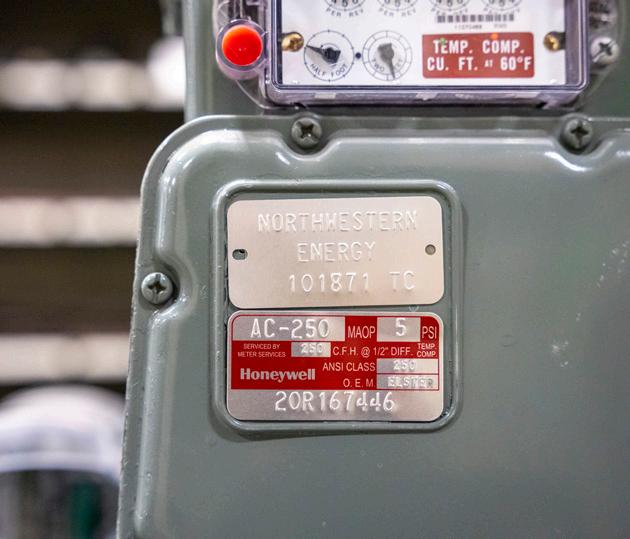
NorthWestern Energy partners with many great associations, has memberships with utility resources and has subscriptions to great services that employees can use while on the job. These organizations also offer courses.
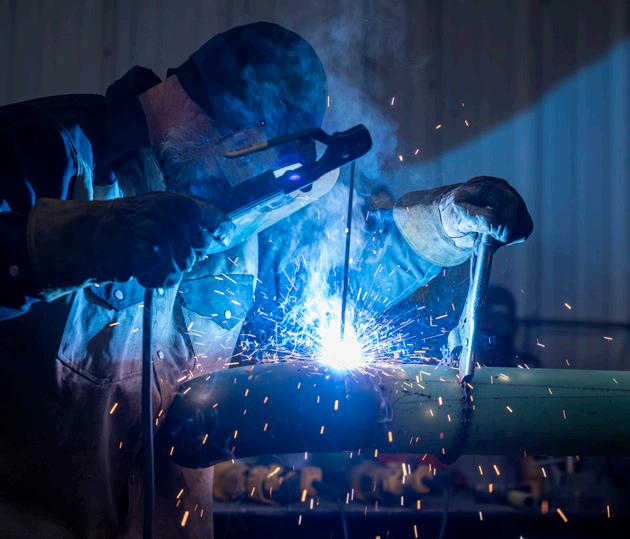
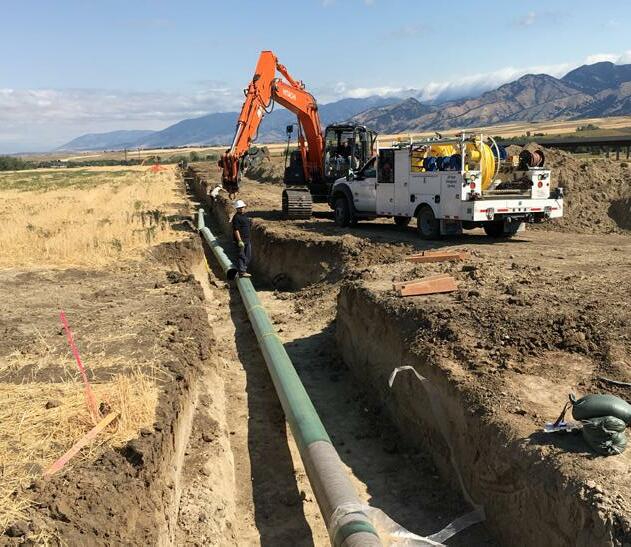
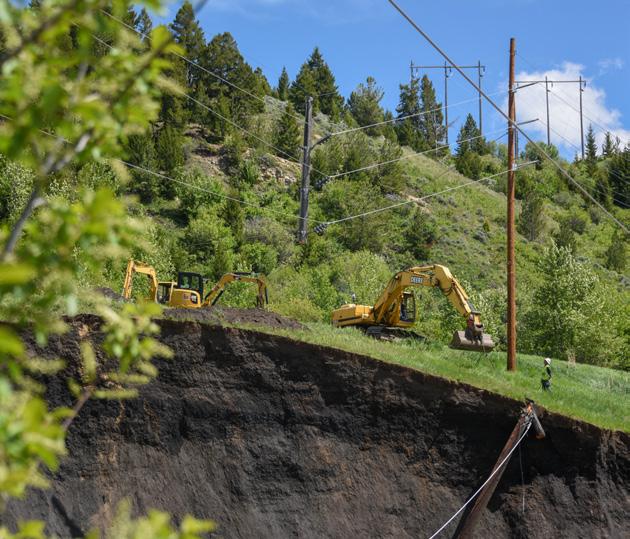

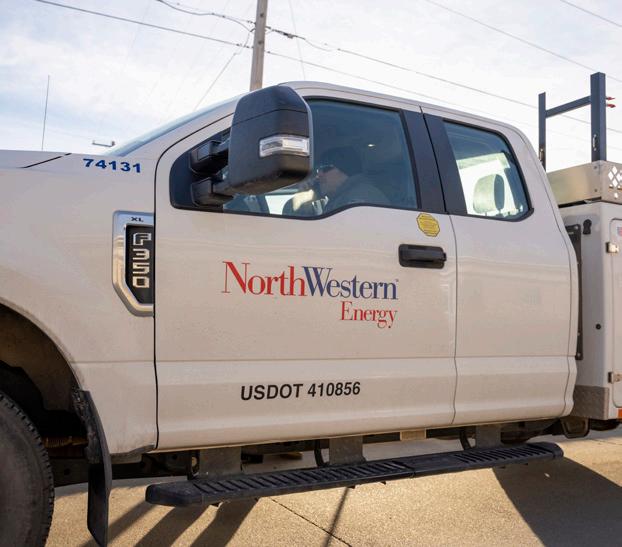
Here is a list of professional resources available for continued employee empowerment:
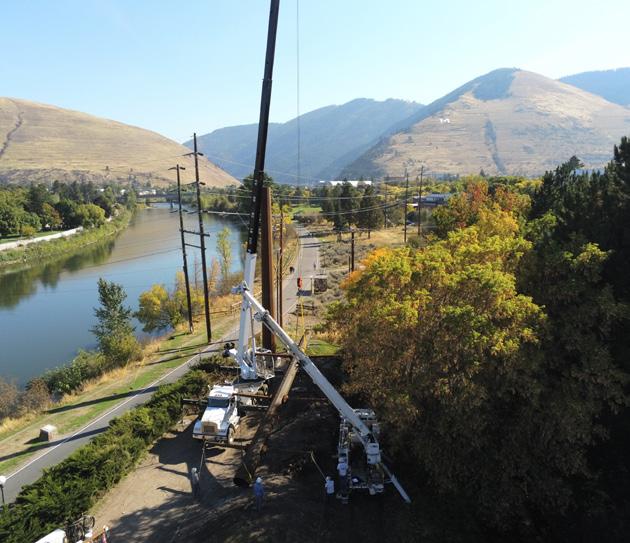
• UEC (Utility Executive Course), University of Idaho
• UEC Summit, University of Idaho
• Western Energy Institute (WEI)

• AGA Executive Leadership Development Program (American Gas Association)
• Leadership South Dakota/ Leadership Montana
• Leadership Montana Masters
• Gartner Professional Development Academy
• MidWest Energy Association (MEA)
• MTI Leadership Academy (Mitchell Technical Institute)
• Innovation Series through EXO Leadership
• Center for Energy Workforce Development (CEWD)
• Chartwell
• The Edison Electric Institute (EEI)
• ESource
• Gartner
• The North Central Electric League (NCEL)
• Public Utilities Fortnightly (PUF)
• Southern Gas Association (SGA)
32 | 2022 Sustainability Report
Diversity and Inclusion
NorthWestern aims to realize the ethical and strategic innovation benefits of a diverse and valued workforce. As we continue to work toward a sustainable energy future, bringing together employees of different backgrounds and perspectives makes our teams stronger and more innovative. As part of our roll out of our Diversity and Inclusion Plan, we are offering uncon scious bias training for our supervisors.
Unconscious bias is favoritism toward or prejudice against another person that is often preconceived or unreasoned. Individ uals, groups, and even institutions can hold biases, and these biases can produce negative or positive consequences. We can recognize and address our biases by using empathy and curiosity to strengthen working relationships within our organi zation.
By recognizing and addressing our biases, we will create a more collaborative workplace. If we don’t address bias, we can – unintentionally – demean or ignore team members. We can get better work done on behalf of our customers, and have a better time doing it.
NorthWestern’s Diversity and Inclusion Plan has four objectives:
• Realize the moral, ethical, and strategic innovation benefits of a diverse and valued workforce
• Grow our inclusive culture demonstrating value for all forms of diversity
• Cultivate and recruit diverse candidates for energy careers in our service areas
• Maintain ongoing fairness and compliance in our human resources processes and practices
In addition to our workforce training, which will grow to include not only unconscious bias training but also inclusion training in the coming year, we are also have a targeted outreach plan focusing on increasing energy career awareness targeting Karen and Hispanic populations in Huron, South Dakota. We are proud that a college student of Karen descent joined our team as a summer intern in 2022. In addition, there are efforts in other communities to increase our career outreach to encourage minority students to consider careers in the energy sector.
Strategic leadership sessions
NorthWestern Energy has a history of taking the time to ensure leadership alignment, devel opment and idea exchange. We take time to ensure that not only our executive team has a strategic understanding our industry and stakeholders, but the larger leadership team is invited and encouraged to participate. This provides our organization with a deeper business acumen and common understanding among a larger team who through the power of inclusion are well positioned to shape and understand the direction of the NorthWestern Energy and to support our success.
NorthWestern’s Chautauqua, named in honor of the social movement of the 19th century that educated and enter tained adults, is an annual inclusive event aimed to bring NorthWestern leaders up to speed on topics important to the company. The company’s top 200 leaders gather once a year to hear company leaders discuss the strategic plan, and give a financial update. In addition, NorthWestern’s entire executive team gathers for a panel discussion where participants are encouraged to ask questions regarding the company’s strate gies in every area of the company.
At our most recent Chautauqua, a key-note speaker from FranklinCovey spoke about using a trust and inspire model of leadership to unleash the potential in our workforce. Creating a culture of trust and inspire will make our company more collaborative and inno vative in order to stay relevant in our ever-changing world.
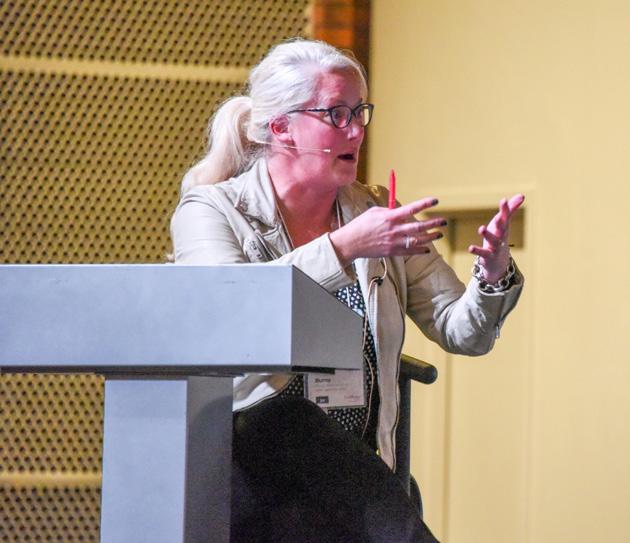

In addition to Chautauqua, once a year top leaders (executives and directors) come together for a strategy session with internal and external speakers to stimulate thinking and increase awareness of important factors that have potential to impact our organization. As part of our leadership strategy sessions a larger leadership group has the opportunity to look ahead to what may come, deeply understand contextual factors impacting our business, identify opportu nities, and take stock of how we are positioned as an organization.
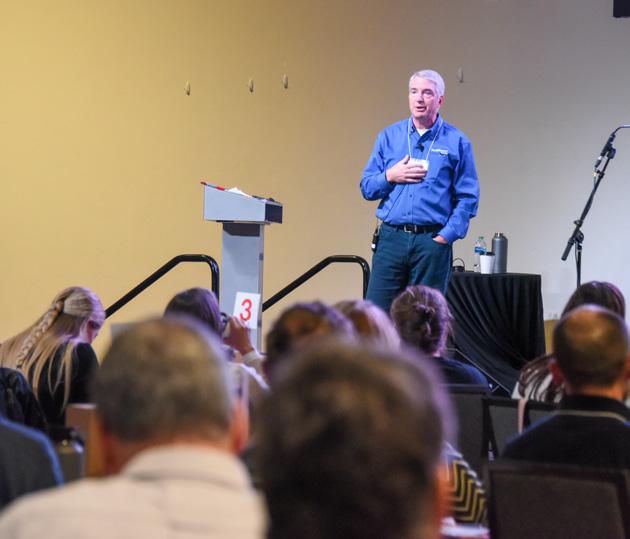
2022 Sustainability Report | 33
Workforce Attraction
To build our future workforce, NorthWestern Energy offers scholarships to students pursing current and future skill set needs. In 2021, we gave more than $102,000 in scholarships to students attending universities, colleges or technical schools in our area.
Internships include meaningful projects
NorthWestern interns do not file paperwork or get coffee. Each intern has a meaningful project assignment, something that will both help increase our interns’ marketability as a future career seekers, and support the company with tangible project outcomes. It is truly a mutually beneficial relationship.
Each year, NorthWestern Energy welcomes a new group of interns for the summer. From researching electric vehicle chargers to designing and creating brochures for customers, our interns have the unique opportunity to learn the behind the scenes of working in the utility industry.
“I would 100% tell anyone who is looking for an internship to consider NorthWestern Energy. I know people say this a lot about the companies they work for but I really believe that NorthWestern Energy has the best employees,” said Sherwin D., a 2021 marketing and communications intern for NorthWestern. “Everyone is so kind and willing to help you navigate your internship. After all, this is a learning experience and it might seem scary at first but everyone here wants to see you succeed and grow in your career. They take your strengths and help you build upon them by giving you projects that you are actually interested in.”
At the end of the summer, every intern gives a presentation to our executives and their managers about their projects and what they accomplished and learned. In addition, the interns come together for a half-day orientation with Chief Executive Officer Bob Rowe.
Stats box:
• 2015 year the internship program was relaunched
• 87 number of interns who have gone through the program
• 18 number of interns who have been hired for permanent positions
Career outreach
NorthWestern attends more than 10 career and job fairs each year to attract and recruit talent from our region. That includes fairs at colleges, universities and trade schools in Montana, South Dakota, North Dakota, Nebraska, Idaho and Washington. We work hard to ensure that our career outreach includes opportunities to expand overall applicant diversity. Employees also speak to students of all ages, from kindergarten to high school in their respective communities. That is some times in a classroom, but is also often at a community event. For example, in the last year, we’ve participated in the Touch a Truck event in Great Falls, Montana that attracted hundreds of children, and the popular Yankton, South Dakota Parade of Lights.
NorthWestern Energy is also a member of the Center for Energy Workforce Development, whose mission is to expand energy career awareness in partnership with member companies. .
Hybrid work location
When COVID hit in March 2020, we asked all employees who could to work from home. When the time came to safely return to the office, we allowed employees to continue to work from home up to 50% of the time.
We also developed a hybrid model for our Customer Service Representatives. These positions used to be housed in our two call centers in Butte, Montana, and Huron, South Dakota. Moving these positions to a hybrid model allowed us to greatly expand our hiring pool. We currently have remote CSRs in Aberdeen, Yankton, Sioux Falls, Grand Island, Missoula and Great Falls Divisions.
Performance Reviews / Feedback
Our annual performance reviews link goals and competencies together so that managers are able to provide a holistic view to employees in regards to their performance against goals, as well as key competencies as they relate to their role in the organization.
This process provides opportunities to develop and enhance skills and knowledge, and enables our employees to grow pro fessionally and perform their duties in a safe and efficient manner.
34 | 2022 Sustainability Report
GOVERNANCE
We are committed to conducting business with integrity, while ensuring transparency and ac countability, and meeting our responsibilities to all our stakeholders.
We adhere to a strict code of ethics regarding corporate governance. Our Code of Con duct and Ethics applies to all employees, board members, vendors and contractors, with an additional Code of Ethics for the Chief Executive Officer and Senior Financial Officers concerning financial reporting and other related matters.
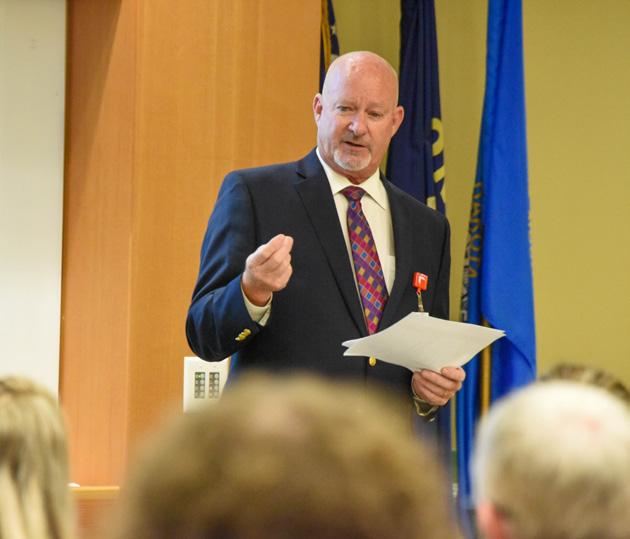
CORPORATE GOVERNANCE AWARD WINNER
NorthWestern Corporation’s proxy statement has won gover nance awards – Best Proxy Statement (Small to Mid-Cap) by Corporation Secretary magazine (2014 & 2019) and Exemplary Compensation Discussion and Analysis from NYSE Governance Services (2014) and NorthWestern was recognized as a finalist by Corporate Secretary magazine in the same category for our ‘12, ‘13, ‘16, ’17 & ‘18 statements

BEST INVESTOR RELATIONS PROGRAM
Recognized, in 2018 (winner) and 2019 (runner-up), by Institutional Investor as a top midcap utility and energy company based on access to senior management, well-informed and empowered IR team, appropriate and timely disclosures and constructive earnings calls.
ESG COMMITTEE
In early 2021, we established an ESG Committee that meets monthly. This committee includes a broad representation of subject matter experts from across the company and is led by NorthWestern’s President and Chief Operating Officer. A main focus of the committee is to provide accurate and reliable disclosure of financial and non-financial performance indicators that demonstrate the company’s approach toward responsible investment, sustainability and ESG considerations. This has in volved better disclosing what we already do, identifying gaps in our practices, and substantive work to further reduce green house gas emissions in both our electric and natural gas systems.
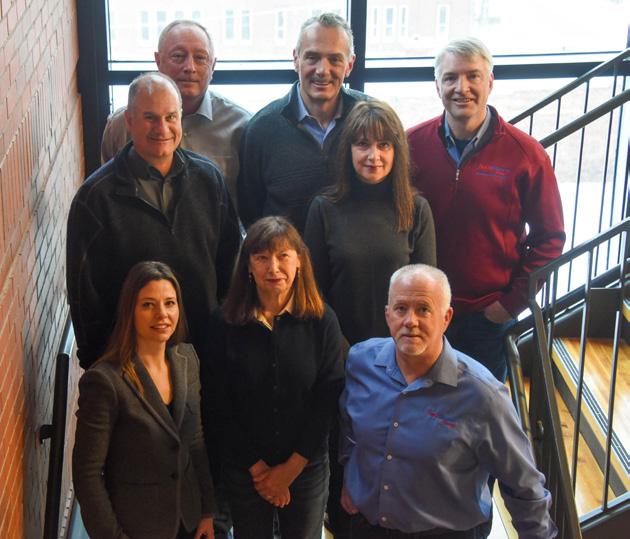
ENTERPRISE RISK MANAGEMENT
The Enterprise Risk Management Committee (ERMC) was formed to provide senior management sponsorship and guidance to ensure that overall risk management objectives, as defined by NorthWestern’s Enterprise Risk Management Policy and the Business Continuity Policy, are achieved. The ERMC is maintained to:
• Increase awareness of ERM and the recognition of emerging operational and strategic risks, including climate-related risks;
• Provide a structured forum where changes to existing risk exposures can be reviewed;
• Provide a forum to ensure executives are fully aware of NWE’s short-, medium-, and long-term risk picture, risk culture and risk appetite, and to consult on strategic risk solutions and action plans;
• Annually present the Corporate Risk Appetite Statement for review and approval by the Board of Directors;
• Provide appropriate linkage to the strategic planning, budgeting, and goal setting processes;
• Review and assess the goals and direction of NWE’s risk mitigation programs, including the business continuity program and the Security Coordinating Council;
• Oversee the creation of appropriate committees, working groups and/or teams as needed to integrate the ERM Program into daily management activities;
• Resolve conflicting interests and priorities; and
• Maintain the committee’s governance structure.
2022 Sustainability Report | 35
OUR BOARD OF DIRECTORS
Our Board oversees the business of the company. It establishes overall policies and standards for us and reviews the per formance of our management. The Board operates pursuant to our Corporate Governance Guidelines that establish the company’s corporate governance philosophy and the policies and practices we follow while governing the company and its affiliates.
As governance standards have evolved, we have enhanced our governance practices as appropriate to best serve the interests of our shareholders. Our commitment to corporate governance best practices has been nationally recognized. Our governance practices are sound, as demonstrated by our ranking as the 5th best utility for governance practices by Moody’s Investor Service.
Our Board acts as a coherent team within an environment that allows individual insights to contribute to group consensus. Our Board focuses on long-term company success and maintains an effective dialogue with management through construc tive relationships which provide timely and appropriate deliberation. Each of our directors has exceeded the stock ownership requirements established by our Corporate Governance Guidelines and continues to hold stock in excess of the ownership requirements.
Our Board is actively engaged both inside and outside of the boardroom. Our Board members have knowledge and insight that enable them to provide guidance concerning our business, with particular focus on corporate strategy, ESG matters, operational and financial performance, succession planning, executive compensation, risk management and operating perfor mance.
What We Do
• Annual election of all directors.
• Majority vote plus resignation standard in uncontested elections. If a director receives more “WITHHOLD AUTHORITY” votes than “FOR” votes, the director must submit a resignation for the Board to consider.
• Allow shareholders owning 25 percent of our shares to call a special meeting.
• Independent board. Our Board is comprised entirely of independent directors, except our CEO.
• Independent Board Chair.
• Independent Board committees. Each of our Board committees (audit, compensation, governance, and operations) is made up solely of independent directors.
• Committee authority to retain independent advisors. Each of our Board committees has the authority to retain indepen dent advisors, which will be paid for by the company.
• Code of Conduct and Ethics. We are committed to operating with honesty and integrity and maintaining the highest level of ethical conduct. Our Code of Conduct and Ethics applies to all employees, as well as the Board. We also have a separate Code of Ethics for the Chief Executive Officer and Senior Financial Officers concerning financial reporting and other related matters.
• Robust stock ownership guidelines for executive officers (2x to 6x) and directors (5x).
What We Don’t Do
• Poison pill. We do not have a shareholders rights plan or poison pill.
• Hedging of company securities. We do not allow our directors, executives, or employees to hedge company securities.
• Corporate political contributions. We do not make contributions to candidates for political office, political parties, or committees, or political committees organized to advance political candidates.
• Supermajority voting. We do not have supermajority voting provisions in our certificate of incorporation or bylaws, ex cept to approve (or amend provisions concerning) certain business combinations or mergers.
36 | 2022 Sustainability Report
Board Diversity
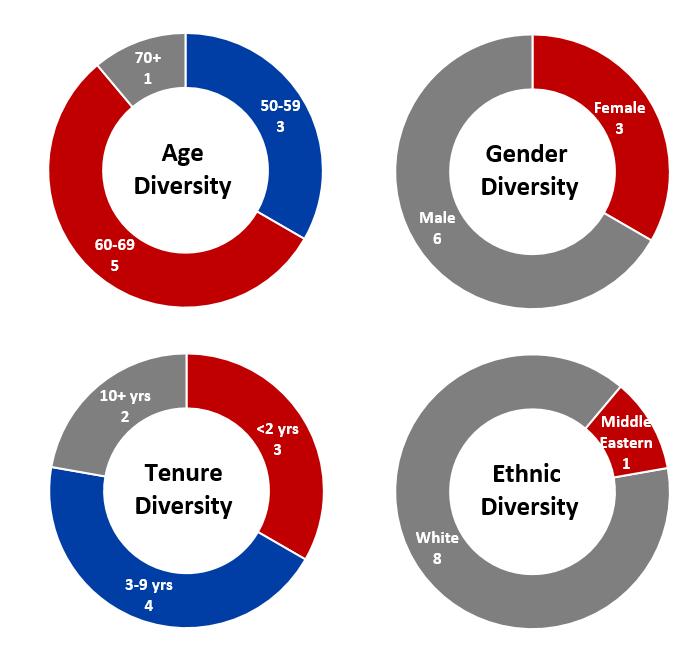
Our Board values the diversity of its members. When considering director nominees, our Board strives to identify nominees that will provide insight to our Board from a number of perspectives, with equal importance placed on gender, age, ethnicity, skills and background, as well as location of residence. Our Board believes diversity is important because varied perspectives expand the Board’s ability to provide relevant guidance to our business. 2020 Women on Boards previously has recognized our Board’s gender diversity.
50/50 Women on Boards™, the leading global education and advocacy campaign driving the movement toward gender balance and diversity on corporate boards, recently commended NorthWestern Energy as a “3+” company, for having three or more women on its corporate board of directors.
With three female directors — Britt Ide, Linda Sullivan and Mahvash Yazdi — representing 37% of our corporate board seats, we have made a purposeful business decision aligning with independent research that demonstrates when three or more women serve on a board, profitability, productivity and workplace engagement increase.
“Our experience is that board members who bring different perspectives, who challenge one another constructively and who ultimately come together to support a direction, help both the board and management make better decisions,” North Western Energy Chief Executive Officer Bob Rowe said.
2022 Sustainability Report | 37
50/50 Women on Boards™ recognizes NorthWestern Energy for gender diversity on our Board of Directors
Executive Pay
Our executive pay program is designed to align the long-term interests of our executives, shareholders and customers. In 2021, approximately 79% of the compensation of our CEO and about 63% of the compensation of our other named executive officers is at risk in the form of performance-based incentive awards. Our Board establishes the metrics and targets for these incentive awards, based on advice from the Board’s independent compensation consultant. We also require our executives to retain meaningful ownership of our stock (from two times to six times their annual base salary). This compensation structure encourages our executives to focus on short- and long-term performance and provides a reward to our executives, share holders and customers when we achieve our financial and operating objectives.
The overall pay our named executive officers received in 2021 is in the bottom half of our 13-member peer utility group. 2021 is the most recent year for which peer group executive compensation is publicly available for our peers. Based on such 2021 compensation data:
• Our named executive officers had an average compensation per named executive officer that was less than all but four of the other 12 companies in our 2022 peer group ($1.65 million for us versus $1.88 million for the peer median) (exclud ing changes in pension value)
• Our CEO’s total compensation was approximately 76% of the median total compensation (excluding change in pension value) of the CEOs in our 2022 peer group.
We consider our executive pay program to be instrumental in helping us achieve our business objectives and effective in rewarding our executive officers for their role in achieving strong financial and operational performance.
Financial Results
We are committed to providing our investors a competitive return.
In 2021, we continued to face a number of challenges due to the COVID-19 pandemic that required us to efficiently manage our business to achieve operational success. We worked safely and achieved some of our highest ever customer satisfaction ratings, all while providing customers with safe and reliable service.
In addition, we had a record year of capital investment in the infrastructure and technology that reliably serves our customers, made a seamless migration to the Western Energy Imbalance Market, and significantly increased the quality and quantity of our environmental, social and governance practices and disclosures. However, our shareholder return trailed our 2021 peer group average and we ranked 9th of our 13-member peer group. Meanwhile, our earnings per share were in line with our expectations.
2021 Basic Earnings Per Share
Our basic EPS increased 17.6 percent to $3.61 in 2021 from $3.07 in 2020.
Ethics & Compliance
Total Shareholder Return
Our TSR was 8.0 percent for the three‑year period ending December 31, 2021, ranking 9th of our 2021 peer group (18.4 percent average).
Dividend Yield
Our dividend of $2.48 per share provided a dividend yield of 4.3 percent based on our stock price at the end of 2021.
We are committed to operating with honesty and integrity and maintaining the highest level of ethical conduct. We adhere to a strict code of ethics regarding corporate governance. Our Code of Conduct and Ethics applies to all employees, board members, vendors and contractors, with an additional Code of Ethics for the Chief Executive Officer and Senior Financial Officers concerning financial reporting and other related matters.
Supplier Code of Conduct and new supplier diversity program
In 2020, we released a Supplier Code of Conduct outlining our expectations for our suppliers. The work of all contractors, suppliers and vendors and their employees, agents and subcontractors (our “Suppliers”) is critical to the success of our mis sion and directly reflects upon NorthWestern Energy. Accordingly, our Suppliers must also embody our “SERVICE” values of Safety, Excellence, Respect, Value, Integrity, Community and Environment.
We also launched a supplier diversity program to diversify service and material suppliers. The program supports all types of small business ownership, including disadvantaged, women-owned, veteran-owned and minority owned businesses.
38 | 2022 Sustainability Report
NORTHWESTERN ENERGY SUSTAINABILITY ACCOUNTING STANDARDS BOARD (SASB) FRAMEWORK
Report on 2021 Data - Disclosed November 2022
Topic SASB Code Metric Comment / References Hyperlink Environment
GHG Emissions
Gross Scope 1 Emissions
IF-EU-110a.1
Gross global Scope 1 emissions.
Percentage of gross global Scope 1 GHG emissions that are covered under emissions reporting-based regulations (%): (NOTE: Electric Utilities & Power Generators sector only): 78% C1. NorthWestern's Scope 1 emissions are included under the Environmental section of our Key Sustainability Statistics Report which is attached as a reference. See the EEI/ESG Sustainability and the AGA ESG documents included as references.
C2. CO2 emissions are included in the CO2e emissions report ed in our Key Sustainability Statistics Report.
C3. CH4 emissions are converted to CO2 equivalent emissions and included in the CO2e emissions reported in our Key Sustain ability Statistics Report.
C4. N2O emissions are converted to CO2 equivalent emissions and included in the CO2e emissions reported in our Key Sustain ability Statistics Report.
C7. SF6 emissions are converted to CO2 equivalent emissions and are reported in our EEI/ESG Sustainability document which is attached as a reference and can also be found on our corpo rate website.
Additional Comments:
A summary of NorthWestern's Scope 1 and Scope 2 emissions associated with our electric and natural gas businesses can be found in the Environmental section of our Key Sustainability Statistics Report.
NorthWestern also calculates the CO2 and CO2e emissions associated with the energy supply portfolios in MT and SD which are made up of owned and contracted resources and market purchases. The energy supply portfolio emissions are published in the EEI/ESG Sustainability document which is posted on North Western's website and updated each year.
NorthWestern calculates the methane and associated CO2e emissions for our natural gas business. These emissions are published in the AGA ESG Template document which is posted on NorthWestern's website and updated each year.
EEI/ESG Sustainability Document (Environmental Section)
Key Sustainability Statistics Report AGA ESG Template
GHG Emissions from Power Deliveries
IF-EU-110a.2
Greenhouse gas (GHG) emissions associated with power deliveries.
NorthWestern Energy publishes GHG emissions associated with electric power delivered to retail customers via the EEI/ESG Sus tainability form which can be found on its corporate website at www.northwesternenergy.com. The form includes data for base line year 2008 and years 2015 through the current year. Note the current year's data cannot be calculated until the following year after all resources in the portfolio have finished their GHG reporting and the data has been verified and combined for the Montana and South Dakota portfolios. NorthWestern Energy also publishes GHG emissions data in its Key Sustainability Statistics Report which is included as a reference and can also be found on www.northwesternenergy.com.
EEI/ESG Sustainability Document
Key Sustainability Statistics Report
2022 Sustainability Report | 39
Topic SASB Code Metric Comment / References Hyperlink
Scope 1 Emissions, Targets,
and Performance
IF-EU-110a.3
Discussion of long- and shortterm strategy or plan to manage Scope 1 emissions, emissions reduction targets, and an analysis of performance against those targets.
Discuss long- and short-term strategy or plan to manage Scope 1 greenhouse gas (GHG) emissions: Our Net Zero by 2050 Document describes NorthWestern's current plan and commitment to achieve net zero Scope 1 and Scope 2 carbon emissions by 2050 while continuing to provide reliable, affordable services for our customers. Our Key Sustain ability Statistics Report provides an easy-to-read reference for current and historic Scope 1 GHG emissions.
Discuss emission reduction target(s) and performance analy sis: Refer to our Net Zero by 2050 Document.
Discuss activities and investments required to achieve the plans and/or targets: Refer to our Net Zero by 2050 Document.
Discuss the scope of strategies, plans, and/or reduction tar gets, as they relate to different business units, geographies, or emissions sources: Refer to our Net Zero by 2050 Document.
Net Zero by 2050 (pdf)
Markets Subject to RPS
IF-EU-110a.4 (1) Number of customers served in markets subject to renewable portfolio standards (RPS) and (2) percentage fulfillment of RPS target by market.
Discuss operations in markets with RPS regulations or where regulations are emerging: During the 2021 Montana Legislative session, Montana repealed its 15% renewable portfolio standard requirement via HB 576. There is no indication of a compulsory RPS requirement in South Dakota.
Additional Comments: Historic renewable portfolio standard reports can be found on the Montana Public Service Commission website at www.psc.mt.gov.
Air Quality
Air Pollutant Emissions
IF-EU-120a.1 Air emissions of the following pollutants:
(1) CO, (2) NOx (excluding N2O), (3) SOx, (4) particulate matter (PM10), (5) mercury (Hg), (6) lead (Pb), and (7) volatile organic compounds (VOCs).
Discuss the calculation methodology for emissions disclosure: Emissions are calculated using EPA approved methods and according to requirements in the applicable Air Quality permits.
Additional Comments: NorthWestern currently reports emissions of GHGs, NOx, SOx, and Hg for owned (including jointly owned) facilities and purchased power on the EEI/ESG and AGA/ESG Sustainability forms. CO2 equivalent Scope 1 and Scope 2 emissions are included in our Key Sustainability Statistics Report. These forms and reports can be found on our corporate website at www. northwesternenergy.com and are included as references below. NorthWestern is compliance with all Air Quality permits for its owned fleet of resources. NorthWestern does not currently summarize, in a single location, emissions of CO, PM10 and VOCs from its fleet or emissions near areas of dense population, if any, but is in the process of developing an emissions database for these constituents which will be posted to our website and included in our Key Sustainability Statistics Report.
EEI/ESG Sustainability Document
Water & Wastewater Management
Water Use and Sources
IF-EU-140a.1
1) Total water withdrawn, (2) total water consumed, percentage of each in regions with High or Extremely High Baseline Water Stress.
Total water withdrawn from all sources, in thousands of cubic meters: 3,999.24
Total water consumed in operations, in thousands of cubic meters: 3,914.65
Percentage of total water that is withdrawn in areas with High or Extremely High Baseline Water Stress (%): 0
Percentage of total water consumed in areas with High or Ex tremely High Baseline Water Stress (%): 0
Additional Comments:
A five year history of water withdrawn and used at owned thermal plants is reported in the Key Sustainability Report. Water utilized in the production of hydro-electric energy is non-con sumptive. Water consumed at operational and administrative facilities is not currently tracked and considered de minimis. Risks associated with weather dependent generation sources is addressed in the 2020 Supplement to the 2019 Electric Supply Resource Procurement Plan.
AGA
ESG Template Key Sustainability Statistics Report
2020 Supplement to the 2019 Electric Supply Resource Procure.
Key Sustainability Statistics Report
40 | 2022 Sustainability Report
Management Incidents
Water
IF-EU-140a.2
Number of incidents of non-compliance associated with water quantity and/ or quality permits, standards, and regulations.
Total instances of non-compliance: 0
Additional Comments: NorthWestern Energy was not the subject of a formal enforce ment action in 2021 or to date in 2022 related to violation of wa ter quantity or water quality laws, regulations, policies or orders. Material environmental issues are disclosed in the 10-K.
Water Risks Management
IF-EU-140a.3
Description of water management risks and discussion of strategies and practices to mitigate those risks.
Describe water management risks associated with water withdrawals, water consumption, and discharge of water and/ or wastewater:
Water use at the thermal facilities is tracked and reported in the Key Sustainability Statistics Report. Risks associated with the portion of Electric Supply Resource portfolio that is weath er dependent is addressed in the Electricity Supply Resource Procurement Plan, including hydroelectricity which makes up over 40% of NorthWestern's electric portfolio. Effective use of the water, albeit non-consumptive, is critical. Resource special ists monitor snowpack, snow/water equivalent, volume runoff forecast and weather to forecast probable water conditions. Generation is then forecast based on this data with risk offset by market purchases.
2020 Supplement to the 2019 Electric Supply Resource Procure.
Key Sustainability Statistics Report
Waste & Hazardouse Materials Management
Coal Combustion Residuals
IF-EU-150a.1 Amount of coal combustion residuals (CCR) generated, percentage recycled.
Amount of coal combustion residuals (CCR) generated from operations, in metric tons (t): 134,112
Percentage of coal combustion residuals (CCR) that were recy cled (%): 9.94%
Additional Comments: This data represents NorthWestern's share of jointly owned coal facilities.
Key Sustainability Statistics Report
CCR Impoundments
IF-EU-150a.2
Total number of coal combustion residual (CCR) impoundments, broken down by hazard potential classification and structural integrity assessment.
Less Than Low Hazard Potential: 1 Satisfactory CRR impound ment.
Signifigant Hazard Potential: 1. Satisfactory CRR impoundment. Total Number of Coal Combustion Residual (CCR) Impound ments: 2
Additional Comments:
Effluent Holding Pond - Significant Hazard Potential - Satisfactory Structural Integrity Assessment.
Bottom Ash Pond - Less than Low Hazard Potential, Satisfactory Structural Integrity Assessment.
Social Capital Access & Affordability
Average Retail Electric Rate
IF-EU-240a.1
Average retail electric rate for (1) residential, (2) commercial, and (3) industrial customers.
Type of Retail Customer: Average Retail Electric Rate (kWh): Residential: 0.12093 Commercial: 0.10737 Industrial: 0.01544
Additonal Comments: 2021 Total Revenue by customer class divided by kWh by cus tomer class.
2021 Annual Report (Page 48)
Monthly Residential Electric Bill
IF-EU-240a.2
Typical monthly electric bill for residential customers for (1) 500 kWh and (2) 1,000 kWh of electricity delivered per month.
Typical Monthly Electric Bill for the First 500 Kilowatt Hours De livered Per Month (kWh) - Residentail Customers: 62.71
Typical Monthyl Electric Bill for the First 1000 Kilowatt Hours Delivered Per Month (kWh) - Residentail Customers: 119.24
Additional Comments: Rates in Effect as of July 1, 2021.
2022 Sustainability Report | 41 Topic
SASB Code Metric Comment / References Hyperlink
Topic SASB Code Metric Comment / References Hyperlink
Electric Disconnections
IF-EU-240a.3
Number of residential customer electric disconnections for non-payment, percentage reconnected within 30 days.
Total number of electricity disconnections among residential customers that resulted from non-payment: 10,796
Percentage of disconnections that are reconnected within 30 days (%): 75.19%
Discuss how policies, programs, and regulations impact the number and duration of residential customer disconnections: Policies, programs and regulations that impact the number and duration of residential disconnects vary based on time of year. We follow separate winter moratorium periods for each state. The moratorium itself would not have an impact on the duration of a customers disconnection, it can however have an impact on timing of disconnection. Each state has separate programs for low-income payment assistance that can impact the duration of a customer's disconnection depending on volumes, etc., and turn around of application and notification to the utility of any assistance. Once accounts are resolved, services are restored as quickly as possible. More information can be found in our Customer Handbooks.
Additional Comments:
We are unable to differentiate disconnections / reconnections by service type since some customers are electric, natural gas and combo customers. The data provided is reflective of all residential jurisdictions (Montana, South Dakota and Nebraska) and electric, natural gas and combo customers.
Montana Customer Handbook (Pages 20-24)
South Dakota Customer Handbook (Pages 20-24)
Nebraska Customer Handbook (Pages 18-21)
Key Sustainability Statistics
Report
Customer Affordability of Electricity
IF-EU-240a.4
Discussion of impact of external factors on customer affordability of electricity, including the economic conditions of the service territory.
Describe the external factors that cause, or are reasonably likely to cause, a significant impact on the affordability of elec tricity among your retail customers:
Each state in which NorthWestern Energy operates (Montana, South Dakota, Nebraska) offers assistance to residential cus tomers in the form of monetary assistance for those who cannot pay their bill or are disconnected from service for non-payment. Unemployment rates are significantly better than the national average. We also have low taxation within the states we operate which drive economic development attracting new companies in our service territory or help current businesses thrive.
Describe the frequency and magnitude in which each external factor impacts the affordability of electricity for customers and the trend in the impact of the factor on the affordability of electricity for customers:
In Montana, over 15% of the typical residential bill recover the cost of property taxes levied by state and local governments upon NorthWestern's electric system.
Describe the risks and opportunities that arise out of the external factors:
We have seen significant population growth to our service terri tories especially in conjunction with the Covid-19 pandemic and many individuals working remotely. As a result, we have seen favorable population shifts from urban areas into the smaller communities and rural areas that NorthWestern Energy serves.
Describe how your average rates, average bills, and/or cus tomer disconnections compare to other utilities: NorthWestern Energy electric and natural gas rates are below the national average rates. Additional information can be found in our Key Sustainability Statistics Report.
Disclose the median household income, poverty rates, employment rates, or other quantitative or qualitative data that depict the economic conditions of the service territo ry:(Source: Census.gov)2020 Median Household Income: Montana $56,539, South Dakota $59,896 and Nebraska $63,0152020 Poverty Rates: Montana 12.4%, South Dakota 11.6% and Nebraska 9.2%2020 High School Graduation Rate: Montana 94.0%, South Dakota 92.2% and Nebraska 91.6%2020 Bache lor’s Degree or Higher: Montana 33.1%, South Dakota 29.3% and Nebraska 32.5%(Source: BLS.gov)2022 (May) Unemployment Rates: Montana 2.4% (9th), South Dakota 2.3% (6th) and Nebras ka 1.9% (1st)
Services and Energy Affordability
Key Sustainability Statistics Report
42 | 2022 Sustainability Report
Account
Topic SASB Code Metric Comment / References Hyperlink
Average Retail Gas Rate
IF-GU-240a.1
Average retail gas rate for (1) residential, (2) commercial, (3) industrial customers, and (4) transportation services only.
Type of Retail Customer: Average Bundled Gas Rate (MMBtu): Residential: 9.0423 Commercial: 7.96844 Industrial: 8.4000
Additional Comments: Average natural gas rates shown for calendar year 2021.
2021 Annual Report (Page 50)
Typical Monthly Gas Bill
IF-GU-240a.2
Typical monthly gas bill for residential customers for (1) 50 MMBtu and (2) 100 MMBtu of gas delivered per year.
Reporting Currency: US Dollars
Type of Customer: Typical Monthly Gas Bill: Residential: First 50 million MBBtu: 48.48 . Residential: First 100 million MBBtu: 90.45
Disclose methodology for calculating typical monthly gas bill for residential customers:
The rates for a typical monthly gas bill in Montana is the average of the 12 months typical bill for 50 dekatherms (50 MMBTU) and 100 dekatherms (100 MMBTU) usage per year in 2021 from internal sources.
Gas Disconnections for Nonpayment
IF-GU-240a.3
Number of residential customer gas disconnections for nonpayment, percentage reconnected within 30 days.
Total number of gas disconnections among residential custom ers that resulted from non-payment: 10,796 Percentage of disconnections that were reconnected within 30 days (%): 75.19%
Discuss how policies, programs, and regulations impact the number and duration of residential customer disconnections: Policies, programs and regulations that impact the number and duration of residential disconnects vary based on time of year. We follow separate winter moratorium periods for each state. The moratorium itself woulnd not have an impact on the duration of a customers disconnection, it can however have an impact on timing of disconnection. Eachst state has separate programs for low-income payment assistance that can impact the duration of a customer's disconnection depending on volumes, etc., and turn around of application and notification to the utility of any assistance. Once accounts are resolved, services are restored as quickly as possible. More information can be found in our Customer Handbooks.
Additional Comments:
We are unable to differentiate disconnections / reconnections by service type since some customers are electric, natural gas and combo customers. The data provided is reflective of all residential jurisdictions (Montana, South Dakota and Nebraska) and electric, natural gas and combo customers.
Montana Customer Handbook (Pages 20-24)
South Dakota Customer Handbook (Pages 20-24)
Nebraska Customer Handbook (Pages 18-21)
2022 Sustainability Report | 43
Gas Affordability
IF-GU-240a.4
Discussion of impact of external factors on customer affordability of gas, including the economic conditions of the service territory.
Describe the external factors that cause, or are reasonably likely to cause, a significant impact on the affordability of gas among your retail customers:
Each state in which NorthWestern Energy operates (Montana, South Dakota, Nebraska) offers assistance to residential cus tomers in the form of monetary assistance for those who cannot pay their bill or are disconnected from service for non-payment. Unemployment rates are significantly better than the national average. We also have low taxation within the states we operate which drive economic development attracting new companies in our service territory or help current businesses thrive.
For each external factor, describe the frequency and magni tude in which the factor impacts the affordability of gas for your customers:
In Montana, over 15% of the typical residential bill recover the cost of property taxes levied by state and local governments upon NorthWestern's natural gas system.
Describe the risks and opportunities that arise out of the external factors:
We have seen significant population growth to our service terri tories especially in conjunction with the Covid-19 pandemic and many individuals working remotely. As a result, we have seen favorable populations shifts from urban areas into the smaller communities and rural areas that NorthWestern Energy serves.
Describe how your average rates, average bills, and/or cus tomer disconnections compare to other utilities: NorthWestern Energy electric and natural gas rates are below the national average rates. Additional information can be found in our Key Sustainability Statistics Report.
Human Capital
Employee Health & Saftey
Incident, Fatality, and Near Miss Frequency
IF-EU-320a.1
Rate
(1) Total recordable incident rate (TRIR), (2) fatality rate, and (3) near miss frequency rate (NMFR).
Total recordable incident rate (TRIR): 1.64 Fatality rate: 0
Additional Comments:
As stewards of critical infrastructure, providers of energy service, and members of the communities we serve, our priority is the health and safety of our employees and customers. Safety and health are considered and integrated into all work activities. We monitor several different key areas relating to safety to review and evaluate our operations, to measure progress, and to enhance compliance with our safety philosophies and policies. These key metrics include the recordable incident rate (number of work-related injuries per 100 employees for a one-year period) and lost time incident rate (number of employees who lost time due to work-related injuries per 100 employees for a one-year period). During the years ended December 31, 2021 and December 31, 2020 our recordable incident rates were 1.64 and 1.36 and lost time incident rates were 0.46 and 0.39 on a company wide basis. Our five-year average safety record for the year ended December 31, 2021 was better than our industry peer group's five-year average.
Key
Sustainability Statistics Report (Page 6)
Key Sustainability Statistics Report (Page 7)
44 | 2022 Sustainability Report
Topic SASB Code Metric Comment / References Hyperlink
Account Services
and Energy Affordability
Business Model Resilience
Electric Utility Revenues
IF-EU-420a.1
Percentage of electric utility revenues from rate structures that (1) are decoupled and (2) contain a lost revenue adjustment mechanism (LRAM).
Percentage of electric utility revenues from decoupled rate structures (%): 0%
Percentage of electric utility revenues from rate structures that contain an LRAM (%): 0%
Additional Comments:
In our 2018 Montana electric rate settlement, the Montana Public Service Commission (MPSC) approved a Fixed Cost Recovery Mechanism Pilot (FCRM), intended to decouple our recovery of fixed, test-year based transmission, distribution, and production costs from sales of energy. At our request, the MPSC delayed implementation of the pilot to July 1, 2021 due to the continued uncertainties created by the COVID-19 pandemic. The FCRM is expected to function over a four-year pilot period, applying primarily to residential customers and our smallest commercial customer class. On April 15, 2021, we filed a request to delay the implementation of our FCRM pilot for another year until July 2022 or beyond, due to the continued pandemic uncertainties.
Smart Grid Technology Electric Load
IF-EU-420a.2
Percentage of electric load served by smart grid technology.
Percentage by megawatt hours of electric load served by smart grid technology (%): 28
Discuss the type of smart grid technology through which its electric load is served, the customer types that are utilizing the technology whether technologies are owned by the utility or the customer, and any plans for further integration of smart grid capabilities:
In 2019 and 2020, NorthWestern Energy installed automated metering infrastructure in the entirety of our South Dakota (elec tric and natural gas service) and Nebraska (natural gas service only) service territory (subject to opt-out provisions). In 2021 through 2025, we expect to install automated metering infra structure in the entirety of our Montana service territory (electric and natural gas service). The primary goals of our distribution system infrastructure investment are to reverse the trend in ag ing infrastructure, maintain reliability, proactively manage safety, build capacity into the system, and prepare our network for the adoption of new technologies. We are taking a proactive and pragmatic approach to replacing these assets while also evaluat ing the implementation of additional technologies to prepare the overall system for smart grid applications.
Sustainability Statistics Report (Page 6)
Customer Electricty Savings
IF-EU-420a.3
Customer electricity savings from efficiency measures, by market.
Market: Montana. Total Amount of Electricity Savings Delivered to Customers from Energy Efficiency Measures, in Megawatt Hours (MWh): 67,939
Discuss regulations related to customer efficiency measures for each relevant market: NorthWestern Energy offers for ALL markets Tax Credits for residential and commercial customers along with an E+ home Energy Check and ENERGY STAR resources. We also offer forms of energy bill assistance and encourage the development of renewable energy resource projects. We also offer education/ training webinars to customers related to energy efficiency.
Discuss the forms of policy, by each market, that allow for or incentivize energy efficiency, including a discussion of the benefits, challenges, and financial impacts associated with such regulations:
In Montana, Docket No. D2018.7.46 and Docket No. 2019.07.040, respectively sets targets of 4.35 aMW to meet for electric energy savings. We have met or exceeded that target the last five years. The incremental annual investment in Demand Side Manage ment (energy savings) programs has been over $12M each year over the last 5 years for both electric and natural gas operations.
Discuss any efforts to meet regulations through incentives developed for customers that promote end-use efficiency: We offer in-home audits for energy efficiency. We provide customers with resources on tax incentives through each state we serve or on the federal level. We also provide customers with resources on energy efficiency for homes and appliances.
Key Sustainability Statistics Report (Page 6)
2022 Sustainability Report | 45 Topic SASB Code Metric Comment / References Hyperlink Business
Model & Innovation
Key
Topic SASB Code Metric Comment / References Hyperlink
Decoupled Gas Utility Revenues
IF-GU-420a.1
Percentage of gas utility revenues from rate structures that (1) are decoupled or (2) contain a lost revenue adjustment mechanism (LRAM).
Percentage of gas utility revenues from revenue decoupled rate structures (%): 0.0%
Percentage of gas utility revenues from rate structures that contain a LRAM (%): 0.0%
Customer Gas Savings
IF-GU-420a.2
Customer gas savings from efficiency measures by market.
Market Type: Montana. Total Amount of Gas Savings (MMBtu): 30,075
List those markets where you report gas savings on a net savings basis and thus may be different from the figures disclosed here: Data is for calendar year 2021.
Discuss customer efficiency measures that are required by regulations for each relevant market: NorthWestern Energy offers a rebate program through a Univer sal System Benefits (USB) renewable energy fund. We also offer a commercial energy efficiency rebate program.
Discuss the policy mechanisms in place for each market that allows for or incentivizes energy efficiency: NorthWestern Energy offers a rebate program for energy effi ciency for both residential and commercial customers. We offer E+ Home EnergyCheck to audit buildings for energy efficiency. We offer education and training opportunities (webinars) related to energy efficiency along with multiple other resources. See link on Save Energy and Money.
Discuss incentives developed for customers that promote enduse efficiency: The Montana government offers loans for alternative energy and tax incentives for efficiency and renewable energy. There are federal tax incentives to have homes or commercial businesses to be energy efficient and also offer tax incentives for equipment meeting the ENERGY STAR certification.
Save Energy and Money
Key Sustainability Statistics Report (Page 6)
Leadership & Governance
Critical Incident Risk Management
Number of Nuclear Power Units
IF-EU-540a.1
Total number of nuclear power units, broken down by U.S. Nuclear Regulatory Commission (NRC) Action Matrix Column.
Licensee Response: 0 Regulatory Response: 0 Degraded Performance: 0
Multiple/Repetitive Degraded Cornerstone Column: 0 Unacceptable Performance: 0
Total number of nuclear power units owned/ operated: 0
Additional Comments: NorthWestern Energy does not own, operate or have long-term contracted nuclear power as part of its electric portfolio.
Efforts to Manage Nuclear Safety
IF-EU-540a.2
Description of efforts to manage nuclear safety and emergency preparedness.
Discuss efforts to manage nuclear safety and emergency preparedness: Not applicable
Discuss how you manage nuclear safety and emergency preparedness: Not applicable
Discuss efforts to create and maintain a culture of nuclear safety and emergency preparedness: Not applicable
Discuss implementation of the Institute of Nuclear Power Operations (INPO) Principles for a Strong Nuclear Safety Cul ture and/or the Institute of Nuclear Power Operations (INPO) Principles for a Strong Nuclear Safety Culture: Not applicable
Additional Comments:
NorthWestern Energy does not own, operate or have long-term contracted nuclear power as part of its electric portfolio.
46 | 2022 Sustainability Report
Pipeline Incidents
IF-GU-540a.1
Number of (1) reportable pipeline incidents, (2) Corrective Action Orders (CAO), and (3) Notices of Probable Violation (NOPV).
Number of U.S. Department of Transportation (DOT) Pipeline and Hazardous Materials Safety Administration (PHMSA) reportable pipeline incidents: 0
Number of PHMSA Corrective Action Orders (CAO) received: 0
Number of Notices of Probable Violation (NOPC) received: 0
Additional Comments: Zero PHMSA reportable incidents in 2021. Number of NOPV's received is 0 in 2021.
Unprotected Metal Gas Pipelines
IF-GU-540a.2
Percentage of distribution pipeline that is (1) cast and/or wrought iron and (2) unprotected steel.
Percentage of natural gas pipelines that are cast and/or wrought iron, by length (%): 0%
Percentage of natural gas pipelines that are unprotected steel, by length (%): 0%
Discuss pipeline replacement rates, use of polyethylene pipes, or other efforts to reduce fugitive emissions and leaks and improve the safety of distribution pipelines: See the description and details of NorthWestern's Enhanced Infrastructure Replacement Program and Gas Distribution Infra structure Program in its Net Zero by 2050 document.
Net Zero by 2050 (pdf) (Pages 16-17)
Gas Pipelines Inspected
IF-GU-540a.3
Percentage of gas (1) transmission and (2) distribution pipelines inspected.
Percentage of gas transmission pipelines that were inspected, by length (%): 100%
Percentage of gas distribution pipelines that were inspected, by length (%): 30%
Additional Comments: Approximations provided are based upon typical annual sched ules.
2022 Sustainability Report | 47 Topic
Hyperlink
SASB Code Metric Comment / References
Intregity Gas System
IF-GU-540a.4 Description of efforts to manage the integrity of gas delivery infrastructure, including risks related to safety and emissions.
Describe efforts to manage the integrity of gas delivery infra structure: NWE has a Pipeline Integrity Management plan that involves monitoring of the pipeline system, particularly in high conse quence areas. We recently formed a Compliance group in the gas transmission department that is heavily involved in ensuring we meet the letter and the spirit of all PHMSA regulations. Some notable recent activities are the Control Room Management plan, Operator Qualification planning and tracking, Emergency Response plan, Underground Storage Plan, Pipeline Integrity Management, and materials tracking. NWE completes annual patrols and leak surveys of all the regulated transmission facili ties and pipelines. The transmission system is actively monitored 24/7/365 by gas controllers via SCADA system. NWE has im plemented a damage prevention group that completes standby during any excavation activities that are occurring near the gas transmission lines. NWE also participates in 811 one-call system and other organizations that spread information about public awareness and damage prevention of gas facilities.
Describe how you integrate a culture of safety and emergency preparedness throughout project lifecycles: Safe production is used throughout all processes at NorthWest ern Energy. In particular, many of our supervisors are trained in Human Performance Initiative. This program looks to prevent errors, but more importantly looks for ways to make sure errors that occur have no consequences. This philosophy is seen throughout our safety culture in work procedures, tailboards, emergency response, and daily operations. Gas transmission has moved from a table-top type approach to emergency train ing to more active full blown scenarios, when possible, that have proven beneficial in any emergency response in all conditions.
Describe your approach to ensuring pipeline operators are qualified or supervised when performing a covered task: In the gas transmission department, we have a weekly oper ations meeting that involves management, field supervision, gas control, environmental, safety, gas transportation, and gas supply employees. Part of this weekly meeting is the tracking of operator qualification of all employees and a thorough review of any employees that are not qualified for a particular task, thus in forming supervision in regards to employees allowed to work on covered tasks. NWE operates under regulations of 49CFR192, which requires Operator Qualification to be followed for certain tasks. NWE has had an operator qualification plan since it was required by code. Transmission follows this plan and the GTS compliance group continually verifies people doing tasks are qualified per our operator qualification program - this is for inter nal and external individuals that will be working on GTS facilities or pipelines. We do allow on-the-job training, which when doing identified tasks requires a fully qualified person to observer the non-qualified individual perform the task. They have to be in direct observation of the task being completed so they can take immediate control if something were to happen.
Describe efforts to mitigate risks and promote emergency preparedness:
Our emergency response plan is reviewed annually for potential needed changes. Additionally, the plan is communicated to all employees in the department. Exercises (as noted above) are performed with our field and emergency response crews annually. Outside agencies, i.e. police and fire departments, are invited to these tabletop exercises. To date, we have had very good participation by these outside agencies. We believe this not only prepares us for an emergency, but fosters a coopera tive relationship with the agencies.
AGA ESG Template (Page 1 - line 2.1, Page 2 - Lines 1.2 & 2.2, and Page 3line 3.1)
Net Zero by 2050 (pdf) (Pages 15-18)
48 | 2022 Sustainability Report
SASB Code
Comment /
Hyperlink
Topic
Metric
References
Integrity of Gas Delivery
IF-GU-540a.4 Description of efforts to manage the integrity of gas delivery infrastructure, including risks related to safety and emissions.
Describe your efforts to manage risks related to human health and safety, and emissions, including fugitive emissions and process emissions, that arise out of the integrity of gas deliv ery infrastructure:
All GTS field employees carry personal monitors that detect methane, oxygen, carbon monoxide, and hydrogen sulfide gas. These monitors are calibrated regularly and training conducted regularly to ensure the atmosphere is safe for employees. Addi tionally, NWE patrols transmission and storage lines on at least an annual basis as well as performing leak checks regularly at our above ground facilities. Leaks are repaired regularly to mini mize the risk to employees and to minimize gas lost. We ensure that employees are operator qualified and trained in what to do if they hear, smell, or find gas.
Discuss direct or indirect financial opportunities related to the management of the integrity of gas delivery infrastructure: Pipeline integrity directly correlates to reliable gas service to our customers. This in turn correlates to revenue and financial success.
Disclose pipeline replacement rates: Gas transmission has averaged around 4 miles per year over the last 5 years. Through integrity management plans, distribution pipeline has average 65 miles of main and approximately 1,000 services each year over the last five years.
Disclose average response time for gas emergencies: Response time for when notification occurs to gas personnel on site is typically less than 30 minutes, but could be slightly longer depending on location and personnel availability. Duration of gas emergencies vary depending on severity of the emergency and ability to access valves, shut off equipment, critical service time, etc. Typical duration of an emergency is around 8-10 hours.
Disclose open Grade 2 and 2+ leaks: As reported on our 2021 Form 7100, at year end there were 11 known leaks on the tranmission system and 99 known for distri bution of which 3 were grade 2, the remaining were grade 3. In most instances, NWE attempts to correct all grade 2 leaks prior to November. Some happen to go beyond that but that number is limited. The total number of leaks identified are most likely grade 3 leaks that are in a monitor status.
Disclose fugitive emissions, including the technique(s) em ployed to measure leakage, the amount of leakage calculated according to each technique it employs, and the regulations to which your gas leakage is subject: 43,344 metric tons in 2021 for our Distribution, Transmission pipeline and storage operations compared to 48,262 metric tons in 2020,
Disclose process emissions: None
Disclose other efforts designed to reduce emissions and/or improve the safety of your gas delivery infrastructure: Northwestern Energy gas consumption equipment, i.e. com pressor stations, implement best available control technology. For example, we retrofitted a number of older compressors with upgraded control panels. These panels have yielded more efficient operations which result in lower emissions and more reliable operations. Many of our above ground facilities have methane detection equipment installed in buildings to monitor for leaks, etc. Additionally, we perform regular emissions testing for CO and NOx on our compressor stations to ensure we are meeting air quality regulations. Majority of our stations have been upgraded to operator/monitor stations that do not relive gas to atmosphere. Additionally, vintage equipment that regular ly vented gas to atmosphere has been identified and replaced over a period of time.
AGA ESG Template (Page 1 - line 2.1, Page 2 - Lines 1.2 & 2.2, and Page 3line 3.1)
Net Zero by 2050 (pdf) (Pages 15-18)
2022 Sustainability Report | 49 Topic SASB Code Metric Comment /
Hyperlink
References
System Risk Management
Non-compliance with Electricity Infrastructure Regulations
IF-EU-550a.1 Number of incidents of noncompliance with physical and/ or cybersecurity standards or regulations.
References Hyperlink
Additional Comments: Based on our own Data Privacy Policy, we do not disclose the number of non-compliance instances around cybersecu rity. However, NorthWestern Corporation incorporates many frameworks into their cybersecurity practices applying numerous governance structures. We have an active threat hunting team as well as a robust incident response and disaster recovery plan which is exercised at least once per calendar year. NorthWest ern Corp performs numerous vulnerability assessments and penetration testing on a weekly basis. NorthWestern Corp also leverages industry leading organization to perform periodic security audits and vulnerability testing. All employees are required to take at least four cyber security courses throughout a calendar year. In addition, employees are actively phished (via email) throughout a calendar year.
Interruptions
IF-EU-550a.2 (1) System Average Interruption Duration Index (SAIDI), (2) System Average Interruption Frequency Index (SAIFI), and (3) Customer Average Interruption Duration Index (CAIDI), inclusive of major event days.
System Average Interruption Duration Index (SAIDI), in minutes: 121.81
SAIDI inclusive of major event days, in minutes: 143.04 System Average Interruption Frequency Index (SAIFI), in minutes: 1.128
SAIFI inclusive of major event days, in minutes: 1.313 Customer Average Interruption Duration Index (CAIDI), in min utes: 108.00
CAIDI inclusive of major event days, in minutes: 108.91
Discuss notable service disruptions: We had several storms (both winter and summer) in Montana in 2021 not classified as major event days. We also had rolling blackouts in South Dakota over a two day period in February 2021 due to extreme cold temperatures. These blackouts were planned to avoid having the entire grid go down. There was also a lightning storm in Montana in June 2021 that spawned outages.
Additional Comments: The metrics provided are reported under the Institute of Electri cal and Electronics Engineers (IEEE) standards. For the SAIDI and CAIDI metrics we are typically in the first or second quartile (first being best practice) versus other electric utilities.
NorthWestern Energy's transmission and distribution electrical services are primarily in rural areas of our service territory. In ad dition, we have many electrical power lines in rugged, mountain ous regions in Montana, were 80% of our business operates.
Activity Metrics
Customers Served - NW Custom SASB
QID
IF-EU-000.A; IF-GU000.A
Number of: (1) residential, (2) commercial, and (3) industrial customers served.
Total Number of Customers Served for IF-EU-000.A (Electric Utilities & Power Generators sector)
Residential for IF-EU-000.A: 362,727 Commercial for IF-EU-000.A: 84,400 Industrial for IF-EU-000.A: 77
Total Number of Customers Served for IF-GU-000.A (Gas Utilities & Distributors sector)
Residential for IF-GU-000.A: 258,319 Commercial for IF-GU-000.A: 36,786 Industrial for IF-GU-000.A: 229
Additional Comments: Average Customer Counts for 2021. Excludes government entities and third party transport customers,
2021 Annual Report (Pages 48 & 50)
Natural Gas Delivered
IF-GU-000.B
Amount of natural gas delivered to: (1) residential customers, (2) commercial customers, (3) industrial customers, and (4) transferred to a third party.
Type of Customer: Amount of Natural Gas Delivered (MMBtu): Residential Customers: 258,319,000 Commercial Customers: 36,786,000 Industrial Customers: 229,000 Transferred to Third Party: 166,000
Additional Comments: These amounts are for calendar year 2021,
2021 Annual Report (Page 50)
50 | 2022 Sustainability Report
Topic SASB Code Metric Comment /
Privacy Policy
Topic SASB Code Metric Comment / References
Total Electricity Delivered IF-EU-000.B
Total electricity delivered to: (1) residential, (2) commercial, (3) industrial, (4) all other retail customers, and (5) wholesale customers.
Total Electricity Delivered (MWh):
Residential Customers: 3,300,000
Commercial Customers: 4,268,000
Industrial Customers: 2.448,000 All Other Retail Customers: 175,000 Wholesale Customers: 0
Length of Transmission and Distribution Lines
Length of Transmission and Distribution LinesNW Custom SASB QID
IF-EU-000.C; IF-GU000.C
IF-EU-000.C; IF-GU000.C
Length of transmission and distribution lines.
Length of transmission and distribution lines.
Length of transmission lines (km): 13,079
Length of distribution lines (km): 32,987
Additional Comments: 13,079 kilometers (8,127 miles) of electric transmission and 32,987 kilometers (20,497 miles) of electric distribution lines. System statistics as of year-end 2021.
Answers for IF-EU-000.C (Electric Utilities & Power Generators sector)
Length of transmission lines for IF-EU-000.C (km): 13,079
Length of distribution lines for IF-EU-000.C (km): 32,987
Answers for IF-GU-000.C (Gas Utilities & Distributors sector)
Length of transmission lines for IF-GU-000.C (km): 3,574 Length of distribution lines for IF-GU-000.C (km): 12,009
Additional Comments:NorthWestern reports our line lengths in miles, but responses provided are converted to kilometers.
Hyperlink
2021 Annual Report (Page 48)
Total Electricity Generated
IF-EU-000.D Total electricity generated, percentage by major energy source, percentage in regulated markets.
Total Electricity Generated by Energy Source (MWh):
Coal: 2,806,876
Natural Gas: 323,844
Nuclear Sources: 0 Petroleum: 1,276 Hydropower: 2,094,750 Solar Sources: 0 Wind Sources: 439,289 Other Renewables: 0 Other Gases: 0 Total Energy Generated: 5,666,035
Total Percentage of Electricity Generated by Energy Source (%):
Coal: 49.54%
Natural Gas: 5.72% Nuclear Sources: 0.0% Petroleum: 0.02% Hydropower: 36.97% Solar Sources: 0.0% Wind Sources: 7.75% Other Renewables: 0.0% Other Gases: 0.0%
Total Percentage of Electricity in Regulated Market by Energy Source (%):
Coal: 31.91%
Natural Gas: 22.82% Nuclear Sources: 0.0% Petroleum: 2.64% Hydropower: 32.95% Solar Sources: 0.0% Wind Sources: 9.68% Other Renewables: 0.0% Other Gases: 0.0%
Additional Comments: All figures include only owned generating resources and exclude spot market purchases long-term contracted resources (2021 data).
2021 Annual Report (Pages 10 & 14)
2021 Annual Report (Pages 16 & 17)
Total Wholesale Electricity Purchased
IF-EU-000.E
Total wholesale electricity purchased.
Total wholesale electricity purchased (MWh): 4,283,792
Additional Comments: Data for Calendar year 2021 - Purchases of electricity
2021 FERC Financial Report (Form No. 1) (Pages 401a-410)
2021 FERC Financial Report (Form No. 1) (Page 401a - Line 10)
2022 Sustainability Report | 51
NORTHWESTERN ENERGY TASK FORCE ON CLIMATE-RELATED FINANCIAL DISCLOSURES (TCFD) INDEX
Report on 2021 Data - Disclosed November 2022
Disclosure Response References
GOVERNANCE
Governance A Describe the board’s oversight of climate-related risks and opportunities.
The charters for our Board’s Compensation, Governance, and Operations Committees formalize the board’s oversight of ESG-related matters. The Governance Committee has primary oversight of ESG reporting and governance, the Operations Committee has specific oversight of environmental and other operational concerns, and the Compensation Committee over sees various human capital and social matters. In addition to the charters, our 2021 and 2022 proxy statements and our Net Zero by 2050 report discuss these oversight responsibilities.
Nominating and Governance Committee Charter
2022 Proxy Statement Pages 3-8
Net Zero by 2050 (web portal) SETO Committee Charter Compensation Committee Charter
Governance B Describe management’s role in assessing and managing climate related risks and opportunities.
We established our internal and cross-functional ESG Commit tee to centralize and coordinate our sustainability efforts and improve public reporting of our efforts. Our committee is active with respect to ESG matters by developing and implementing initiatives and policies; communicating with employees, inves tors, and other stakeholders; and monitoring ESG developments so that we can continue to deliver a bright future. Our 2021 and 2022 proxy statements and our Net Zero by 2050 report discuss the ESG Committee, and our Sustainability Portal on our website displays the Committee’s work.
2022 Proxy Statement Pages 3-8
ESG Disclosure Committee
Net Zero by 2050 (web portal)
Sustainability Portal (ESG Website)
STRATEGY
Strategy A Describe the climate-related risks and opportunities the organization has identified over the short, medium, and long term.
NorthWestern, like the rest of the regulated energy industry, has been transitioning its generation portfolio to cleaner resources to reduce emissions. Considerable progress has been made through the addition of owned and contracted carbon free resources and currently have a generation portfolio that is 56% carbon-free (as measured by MWh delivered), significantly better than the electric industry’s 40% equivalent measure. Additional details of risks and opportunities can be in NorthWestern's Net Zero by 2050 report and our annual Form 10-K. You should not interpret the disclosure of any risk factor to imply that the risk has not already materialized. While we believe we have identi fied and discussed the key risk factors affecting our business, there may be additional risks and uncertainties that are not presently known or that are not currently believed to be signifi cant that may adversely affect our business, financial condition, results of operations or cash flows in the future.
2022 Proxy Statement
Net Zero by 2050 (web portal)
2021 Annual Report Pages 25-35 & F40-F43 of 10-K Section of Annual Report
Strategy B Describe the impact of climaterelated risks and opportunities on the organization’s businesses, strategy, and financial planning.
NorthWestern, like the rest of the regulated energy industry, has been transitioning its generation portfolio to cleaner resources to reduce emissions. Considerable progress has been made through the addition of owned and contracted carbon free resources and currently have a generation portfolio that is 56% carbon-free (as measured by MWh delivered), significantly better than the electric industry’s 40% equivalent measure. Additional details of risks and opportunities can be in NorthWestern's Net Zero by 2050 report and our annual Form 10-K. You should not interpret the disclosure of any risk factor to imply that the risk has not already materialized. While we believe we have identi fied and discussed the key risk factors affecting our business, there may be additional risks and uncertainties that are not presently known or that are not currently believed to be signifi cant that may adversely affect our business, financial condition, results of operations or cash flows in the future.
2022 Proxy Statement
2021 Annual Report Pages 25-35 & F40-F43 of 10-K Section of Annual Report
Net Zero by 2050 (web portal)
52 | 2022 Sustainability Report
Disclosure Response References
Strategy C Describe the resilience of the organization’s strategy, taking into consideration different climaterelated scenarios, including a 2°C or lower scenario.
Our commitment at NorthWestern Energy is to provide our customers and communities reliable, affordable and responsible critical energy infrastructure and essential service. We are stew ards of over $7 billion in electric and natural gas infrastructure dedicated to serve our customers in Montana, South Dakota, Nebraska and Yellowstone National Park. In 2022 we expect to invest another $582 million of capital in this infrastructure. Be cause of the special places we are privileged to serve, environ mental stewardship is core to who we are and what we do.
While staying true to our core responsibilities, we are also committing to achieve carbon neutrality in our electric and natural gas operations by 2050 – net zero carbon and methane emissions. This will allow us to do our part, as a relatively small company serving a large and dynamic region, to help achieve the goal of limiting the global temperature increase to less than 2° Celsius (3.6° Fahrenheit).
Our Net Zero commitment is part of our much larger focus on Environmental, Social, and Governance (ESG) work.
2022 Proxy Statement Pages 3-8
Net Zero by 2050 (web portal)
2021 Annual Report Pages 25-35 & F40-F43 of 10-K Section of Annual Report
RISK MANAGEMENT
Risk Management A Describe the organization’s processes for identifying and assessing climaterelated risks.
We deploy a robust enterprise risk management program (ERM) developed nearly 20 years ago. This program is overseen by an executive ERM committee that has identified wild fire as the largest climate-related risk we currently experience. Over the last decade, we have made significant investment to clear haz ard trees in heavily forested areas, especially focusing on those areas infested with mountain pine beetles. Those areas often have standing dead trees that are at a much higher risk of falling into our transmission and distribution power lines and sparking fire. In addition, with warmer temperatures and reduced precip itation, we are experiencing longer fire seasons. Both forested and prairie grass fires pose a risk to us and our customers and communities. We continue to expand our fire mitigation activities to address these risks while also hardening our system against other physical and cyber related threats.
We monitor federal, state, and local environmental initiatives to determine potential impacts on our operating and financial results. As new laws or regulations are implemented, our policy is to assess their applicability and implement the necessary mod ifications to our facilities or their operation to maintain ongoing compliance. A qualitative overview of our process to identify and assess environmental matters is included in our annual Form 10-K as well as Market Considerations and Policies section included in our Net Zero by 2050 report.
2022 Proxy Statement Pages 3-8
2021 Annual Report Pages 25-35 & F40-F43 of 10-k Section of Annual Report
Enterprise Risk Management Charter
Enterprise Risk Management Policy Net Zero by 2050 (web portal)
Risk Management B Describe the organization’s processes for managing climaterelated risks.
We deploy a robust enterprise risk management program (ERM) developed nearly 20 years ago. This program is overseen by an executive ERM committee that has identified wild fire as the largest climate-related risk we currently experience. Over the last decade, we have made significant investment to clear haz ard trees in heavily forested areas, especially focusing on those areas infested with mountain pine beetles. Those areas often have standing dead trees that are at a much higher risk of falling into our transmission and distribution power lines and sparking fire. In addition, with warmer temperatures and reduced precip itation, we are experiencing longer fire seasons. Both forested and prairie grass fires pose a risk to us and our customers and communities. We continue to expand our fire mitigation activities to address these risks while also hardening our system against other physical and cyber related threats.
We monitor federal, state, and local environmental initiatives to determine potential impacts on our operating and financial results. As new laws or regulations are implemented, our policy is to assess their applicability and implement the necessary mod ifications to our facilities or their operation to maintain ongoing compliance. A qualitative overview of our process to identify and assess environmental matters is included in our annual Form 10-K as well as Market Considerations and Policies section included in our Net Zero by 2050 report.
2022 Proxy Statement Pages 3-8
2021 Annual Report Pages 25-35 & F40-F43 of 10-K Section of Annual Report
Net Zero by 2050 (web portal)
Enterprise Risk Management Charter Enterprise Risk Management Policy
2022 Sustainability Report | 53
Disclosure Response References
Risk Management C Describe how processes for identifying, assessing, and managing climaterelated risks are integrated into the organization’s overall risk management.
We deploy a robust enterprise risk management program (ERM) developed nearly 20 years ago. This program is overseen by an executive ERM committee that has identified wild fire as the largest climate-related risk we currently experience. Over the last decade, we have made significant investment to clear haz ard trees in heavily forested areas, especially focusing on those areas infested with mountain pine beetles. Those areas often have standing dead trees that are at a much higher risk of falling into our transmission and distribution power lines and sparking fire. In addition, with warmer temperatures and reduced precip itation, we are experiencing longer fire seasons. Both forested and prairie grass fires pose a risk to us and our customers and communities. We continue to expand our fire mitigation activities to address these risks while also hardening our system against other physical and cyber related threats.
We monitor federal, state, and local environmental initiatives to determine potential impacts on our operating and financial results. As new laws or regulations are implemented, our policy is to assess their applicability and implement the necessary mod ifications to our facilities or their operation to maintain ongoing compliance. A qualitative overview of our process to identify and assess environmental matters is included in our annual Form 10-K as well as Market Considerations and Policies section included in our Net Zero by 2050 report.
2022 Proxy Statement Pages 3-8
2021 Annual Report Pages 25-35 & F40-F43 of 10-k Section of Annual Report
Net Zero by 2050 (web portal)
Enterprise Risk Management Charter Enterprise Risk Management Policy
METRICS AND TARGETS
Metrics and Targets
A Metrics used by the Organization to Assess ClimateRelated Risks and Opportunities.
We utilize several different frameworks to disclose our cli mate related metrics, including the industry specific templates developed in collaboration with the Edison Electric Institute and the American Gas Association along with our Key Sustainability Statistics report. These reports can be found on the Sustainabili ty Portal on our website; a link to each is provided.
Processes for managing climate-related risks are discussed in NorthWestern's 2021 Annual Report on pages 20, 21, 26, 27, 3033 and F-41-42. A link to our 2021 Annual Report is provided.
NorthWestern's Net Zero by 2050 document provides a discus sion related to metrics and targets can be found on pages 14 and 18. A link to our Net Zero by 2050 document is provided.
Key Sustainability Statistics Report
2021 Annual Report Pages 20, 21, 26, 27, 30-33 and F-4142 of 10-k Section of Annual Report
EEI/ESG Sustainability Document
AGA ESG Template
Net Zero by 2050 (web portal) Pges 14 & 18
Net Zero by 2050 (pdf)
Metrics and Targets
B - Scope 1 & 2
Disclose Scope 1 and Scope 2 Greenhouse Gas (GHG) Emissions, and the Related Risks.
NorthWestern's Scope 1 and 2 emissions are published in our Key Sustainability Statistics report. While our Net Zero 2050 report announces a target that is spe cific to our Scope 1 and 2 emissions, we will continue to attempt to identify and assess our Scope 3 emissions. However, we currently believe there are too many complexities and variables outside our control to report or establish any Scope 3 targets at this time.
NorthWestern calculates the CO2 and CO2e emissions associat ed with the energy supply portfolios in MT and SD and its natural gas T&D business each year. See the EEI/AGA ESG references.
Net Zero by 2050 (pdf) Pages 14 & 18
EEI/ESG Sustainability Document
AGA ESG Template
Key Sustainability Statistics Report Pages 4 & 5
Metrics and Targets
B - Scope 3
Disclose Scope 3 Greenhouse Gas (GHG) Emissions and the Related Risks.
We are currently reporting Scope 3 emissions associated with third party electricity purchases (market purchases and longterm contracted purchased power agreements) for electricity delivered to and consumed by our customers. See the EEI ESG reference.
EEI/ESG Sustainability Document
Metrics and Targets
C Describe the targets used by the organization to manage climaterelated risks and opportunities and performance against targets.
Our Net Zero by 2050 report describes the targets we are using to manage climate-related risks and opportunities and the incremental steps we will take as we transition to a cleaner energy future.
Net Zero by 2050 (web portal)
Net Zero by 2050 (pdf)
54 | 2022 Sustainability Report







































































































